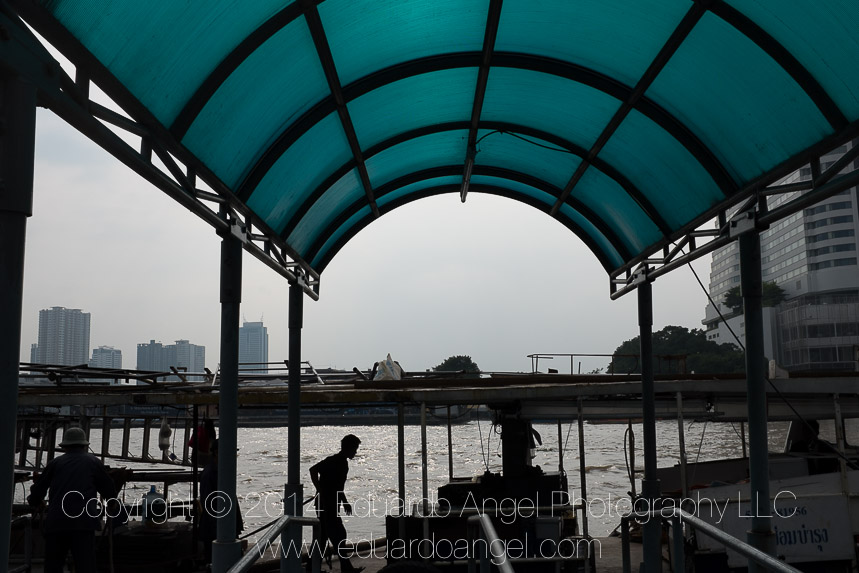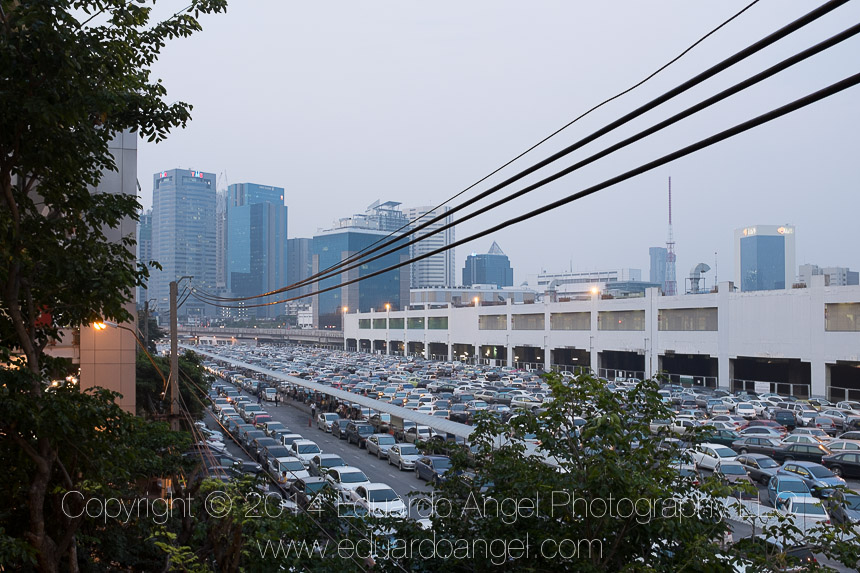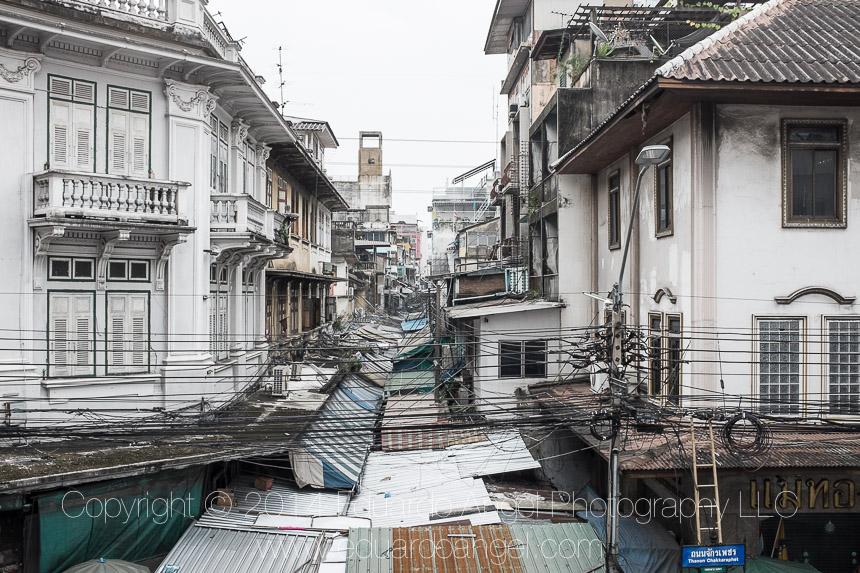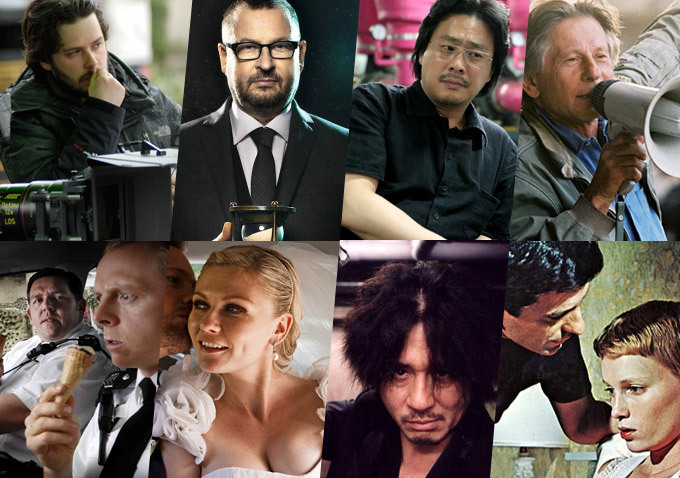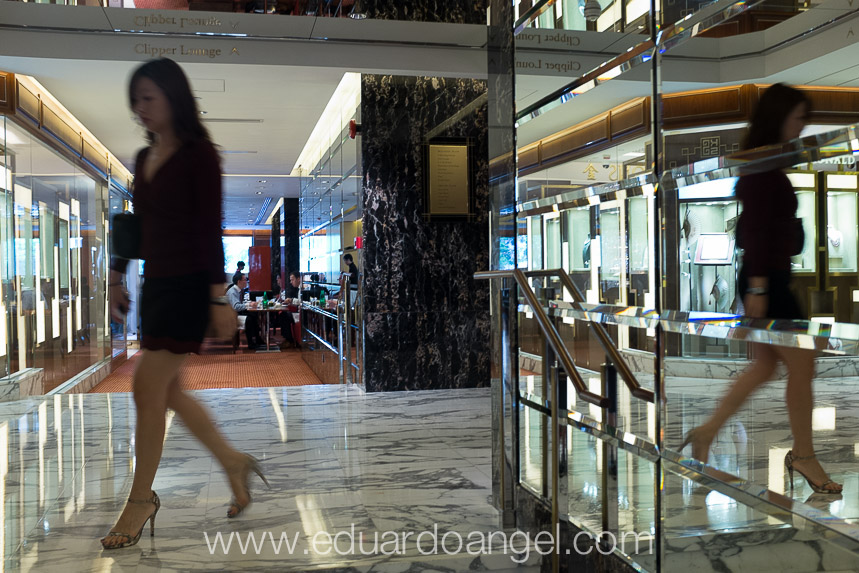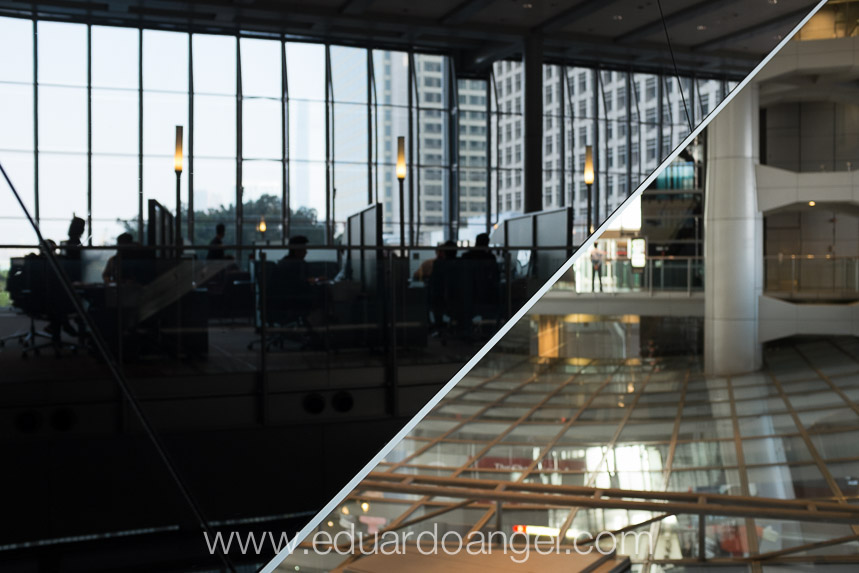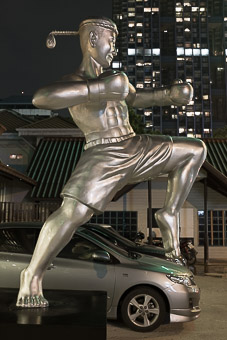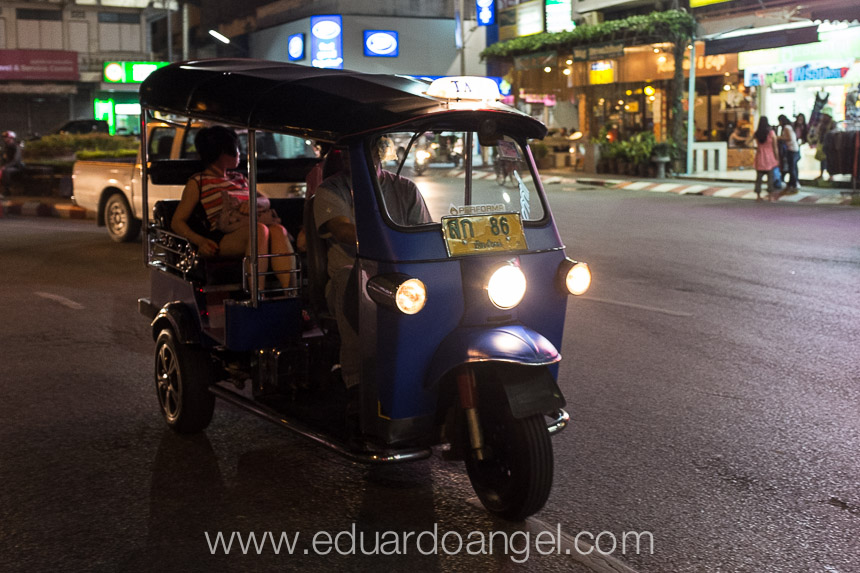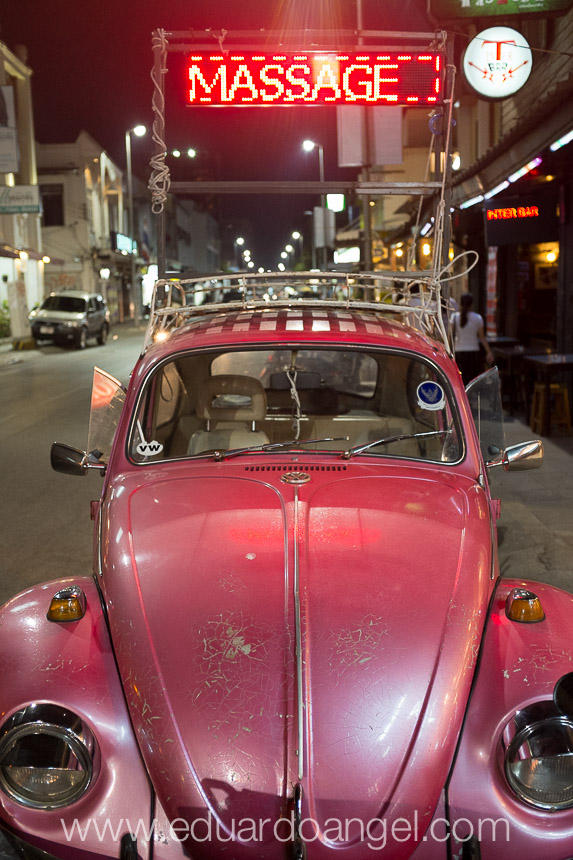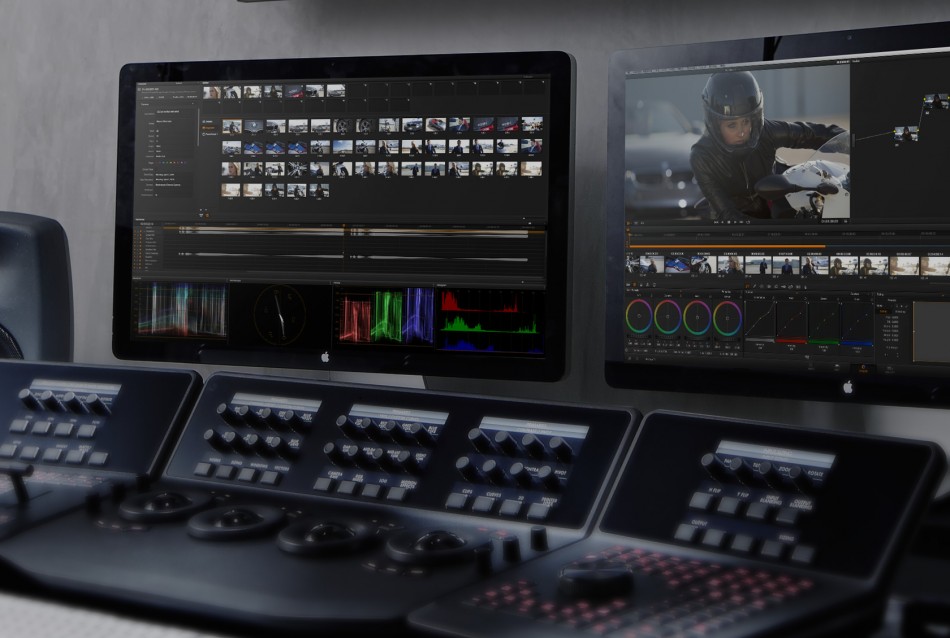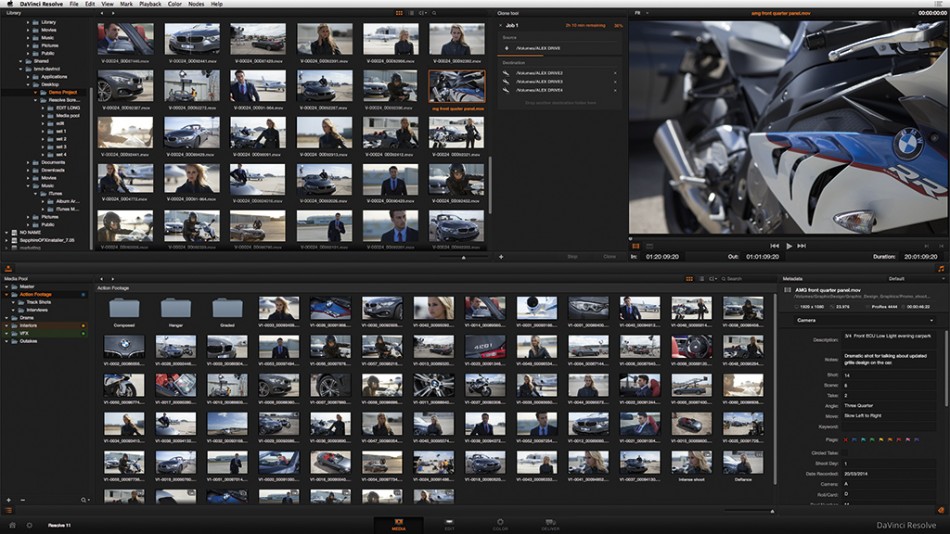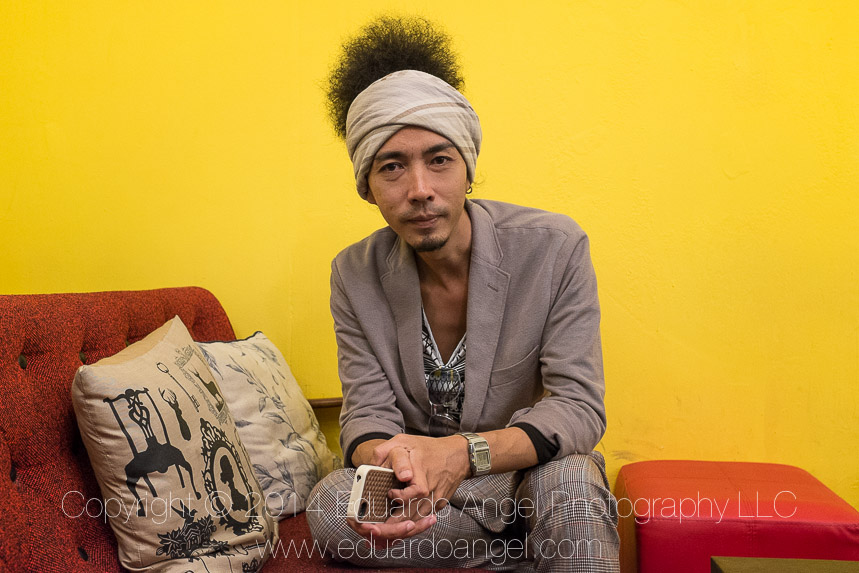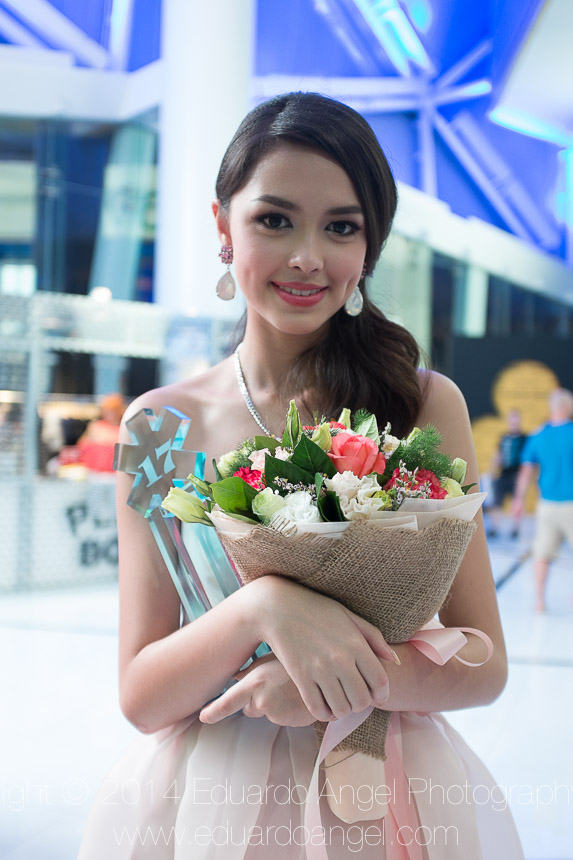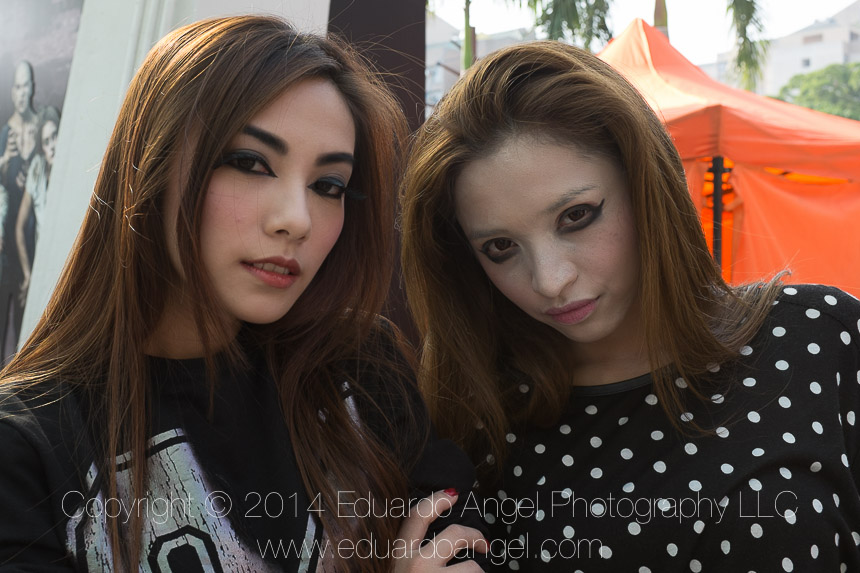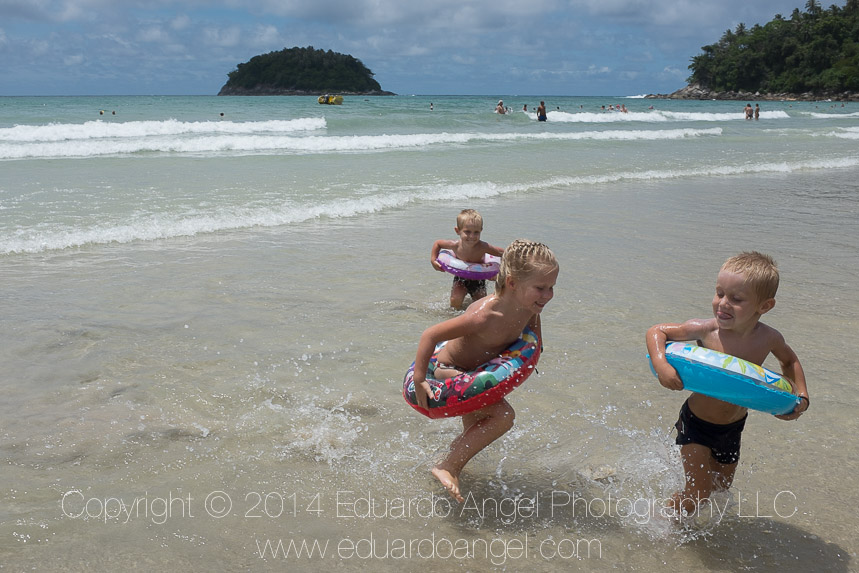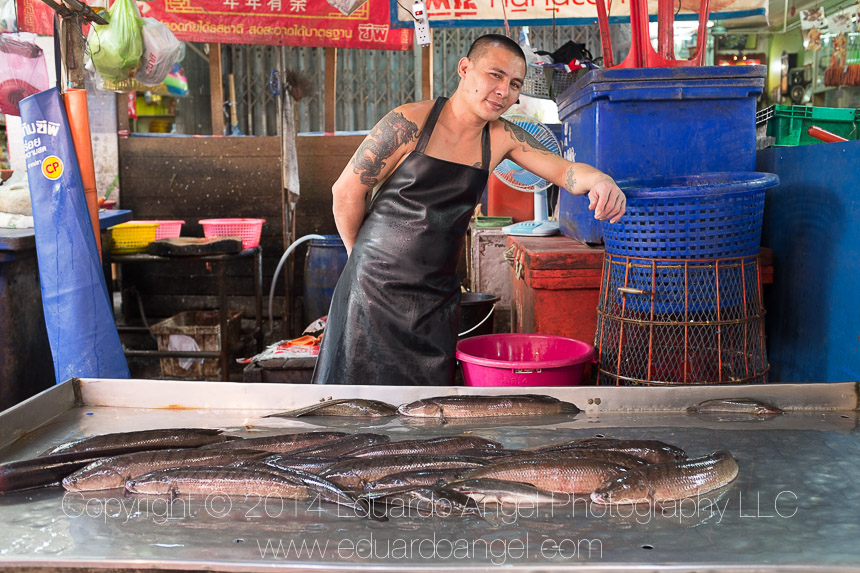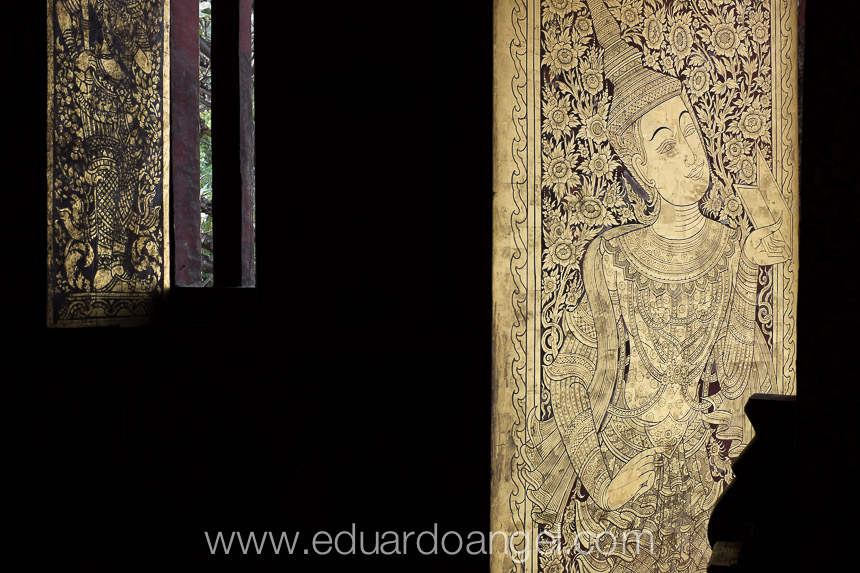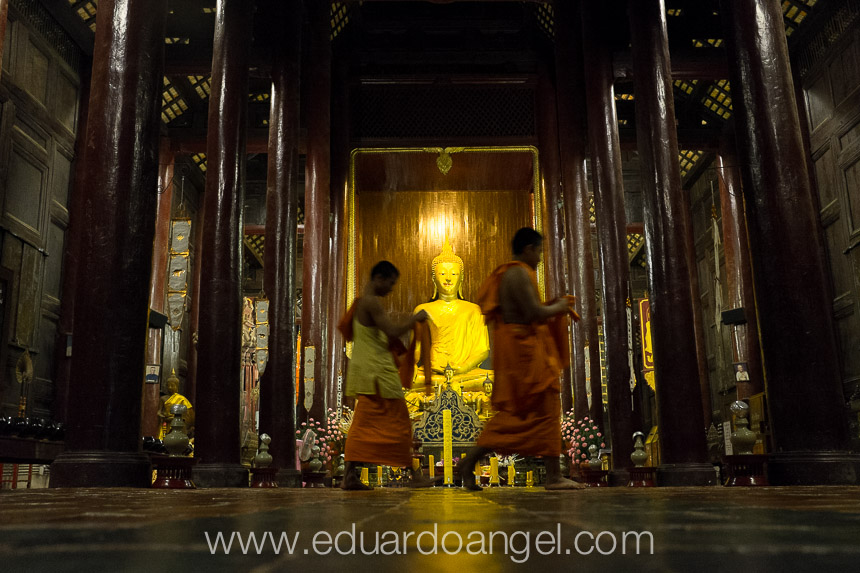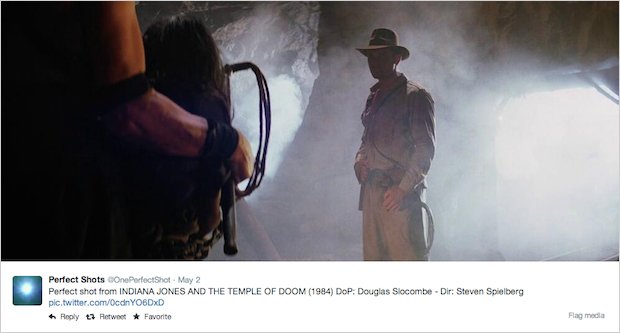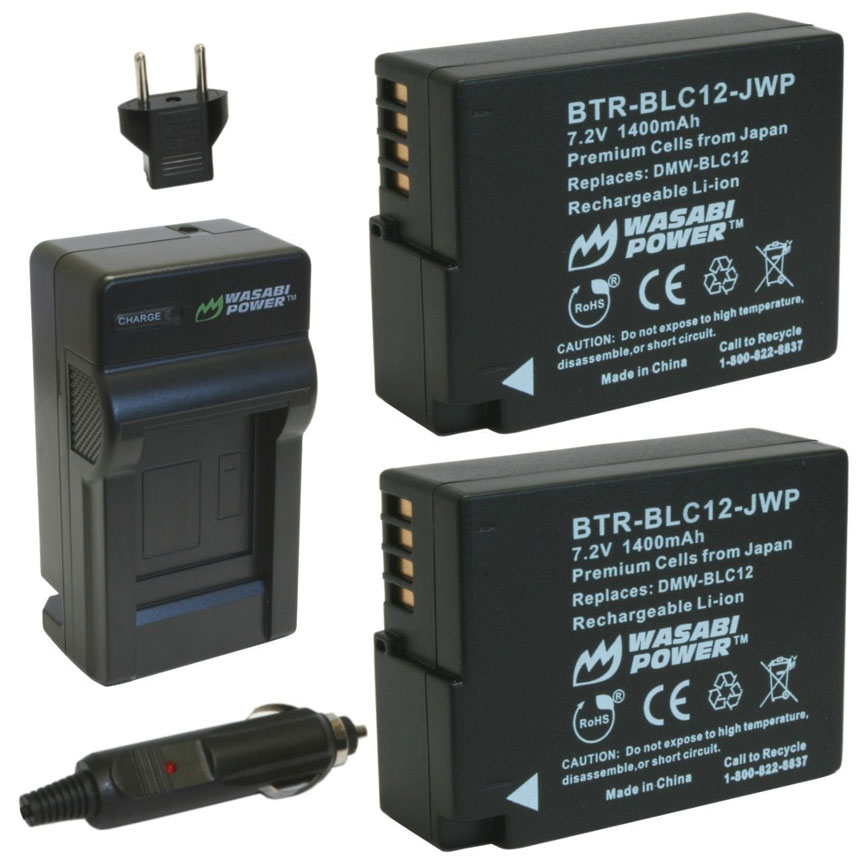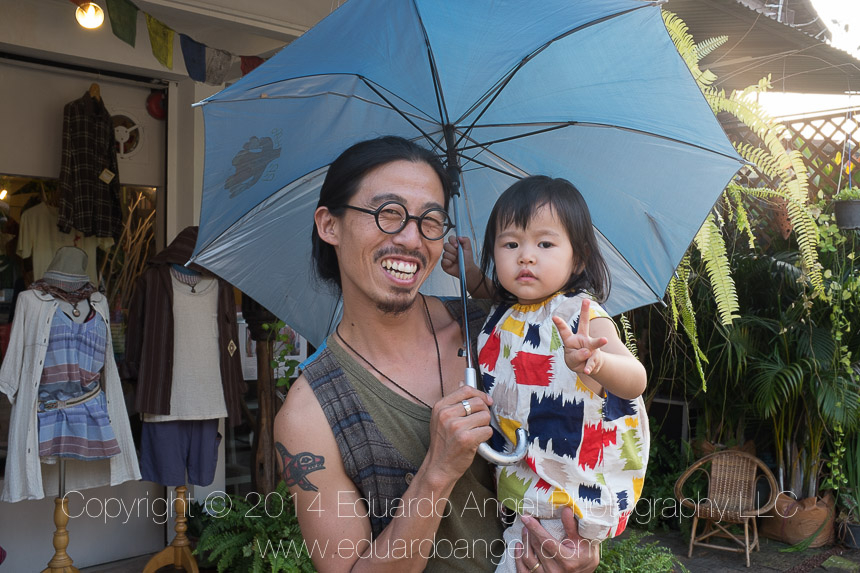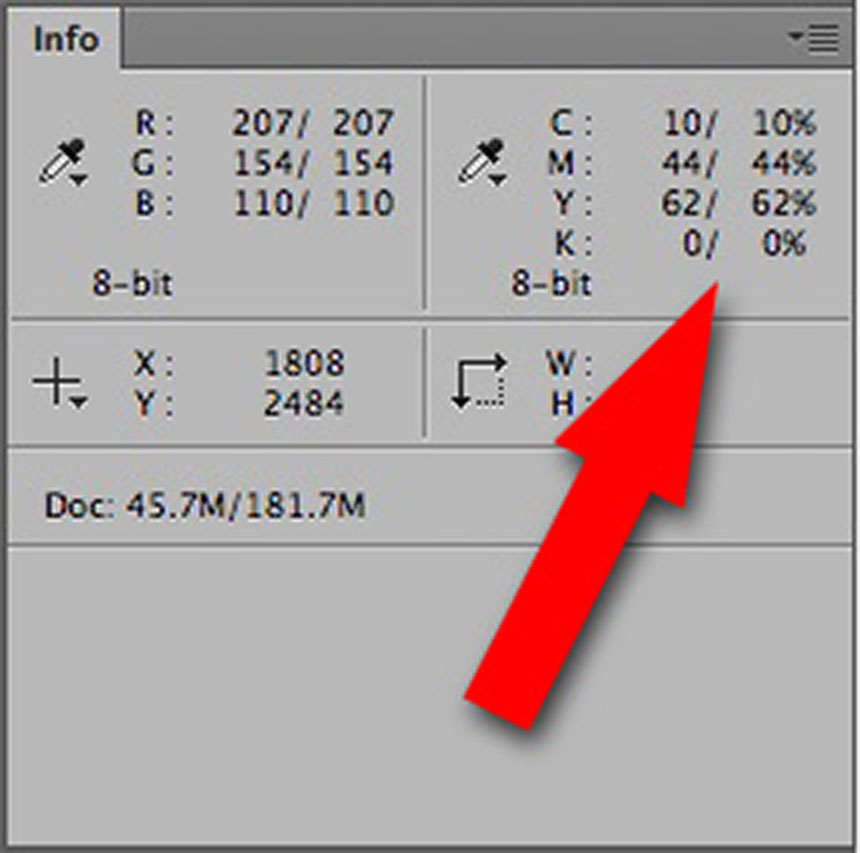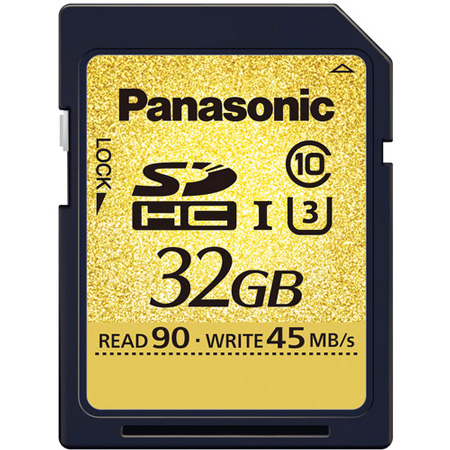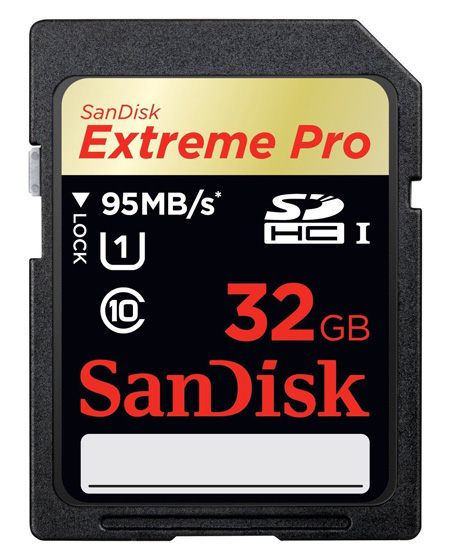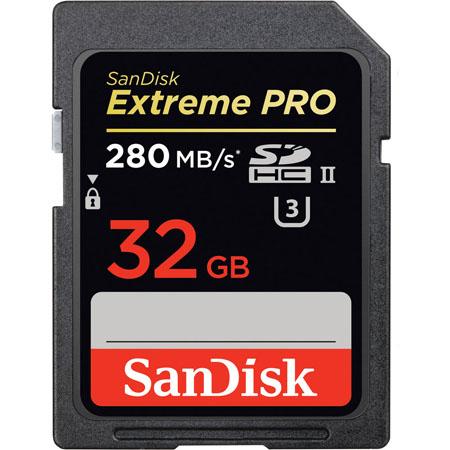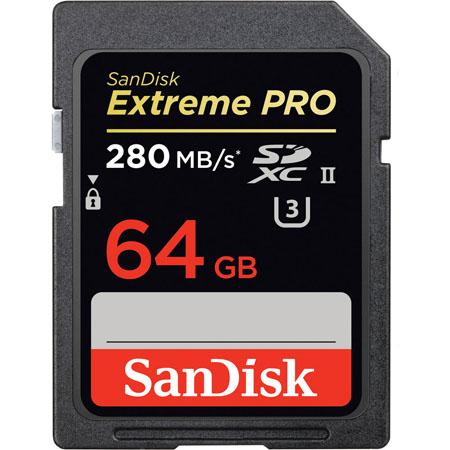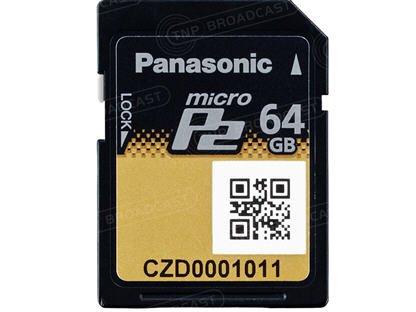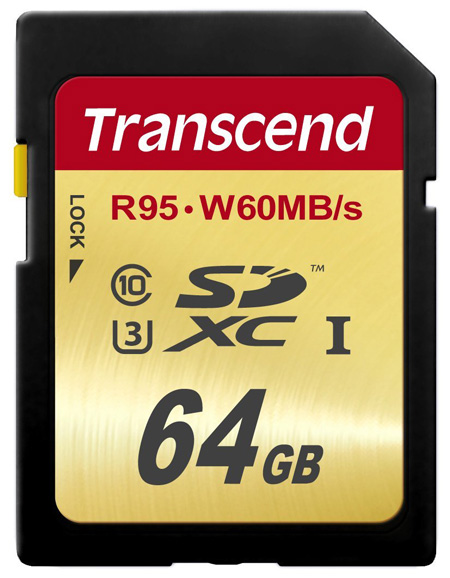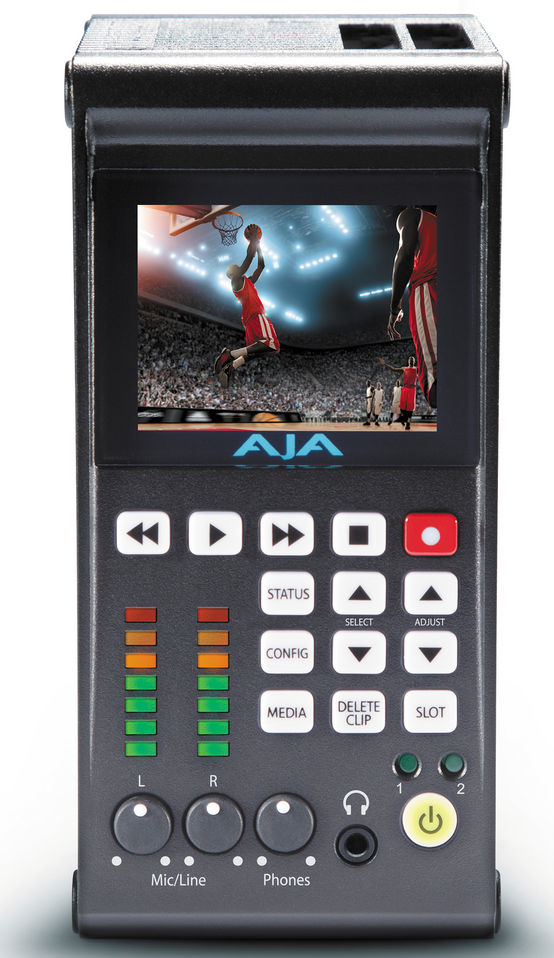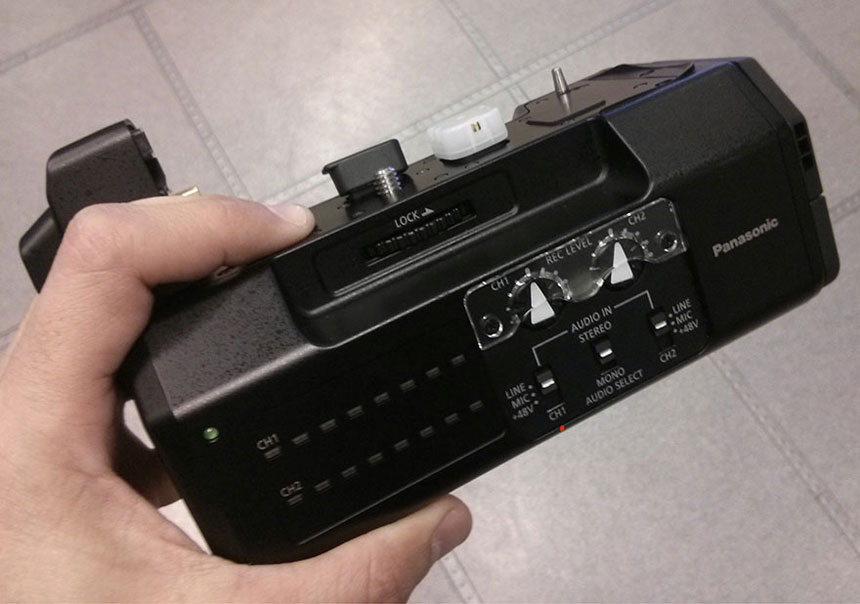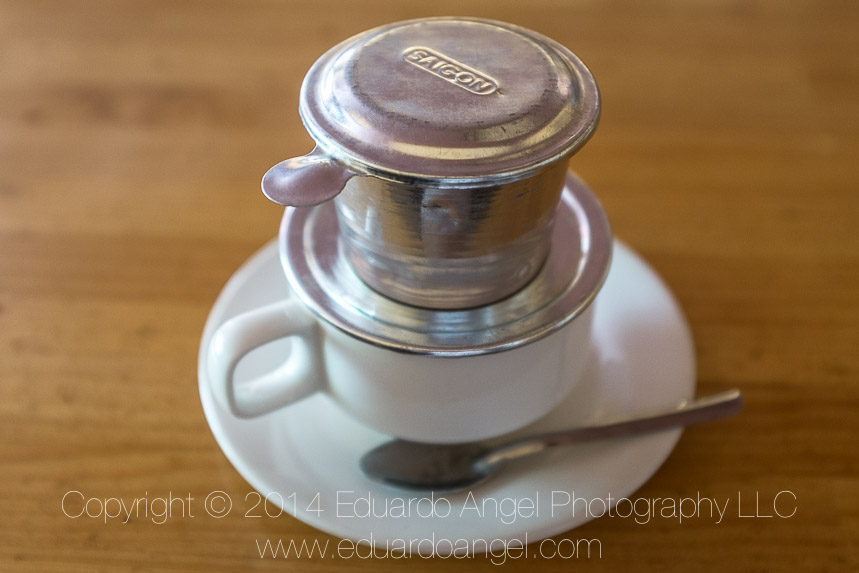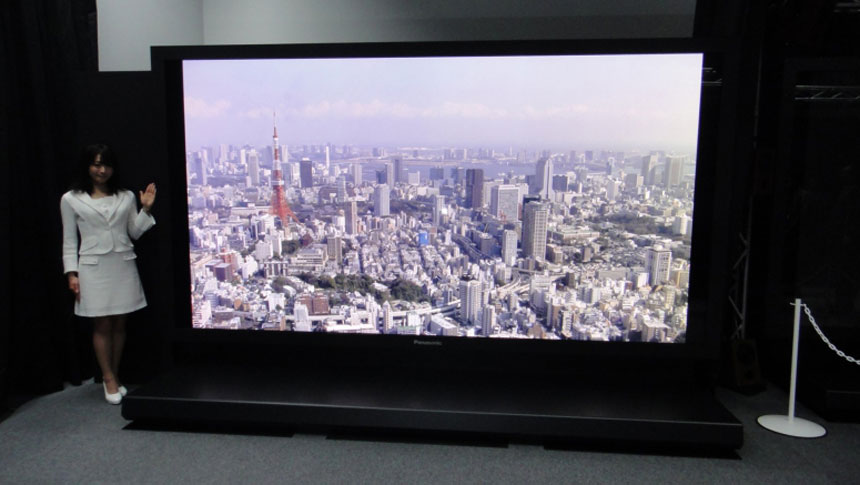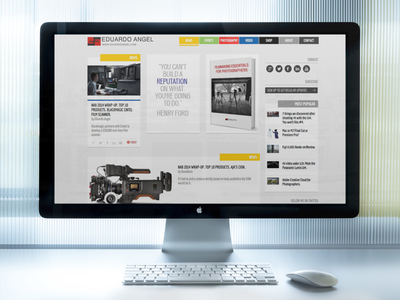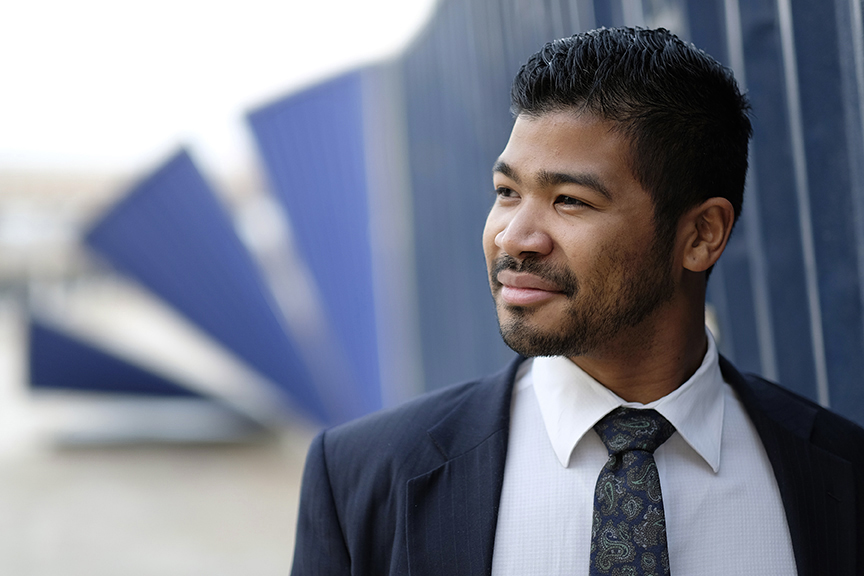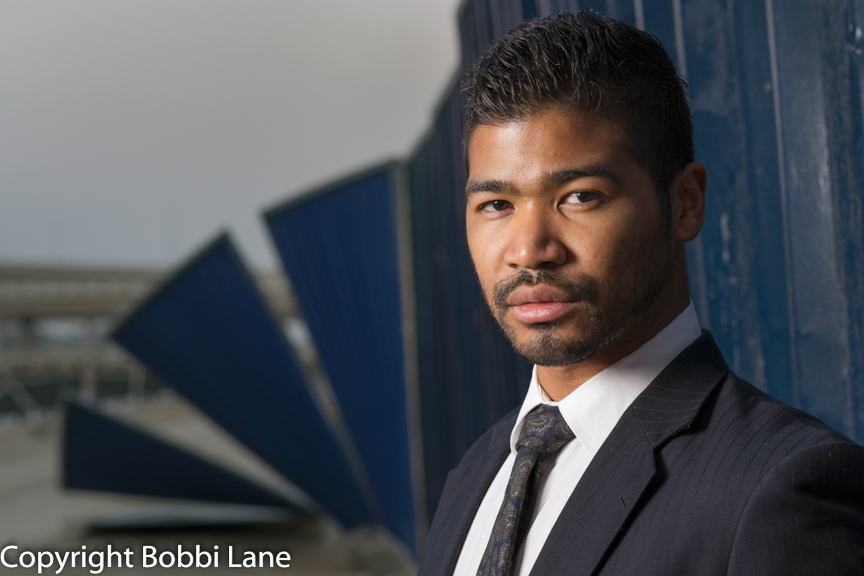Photography
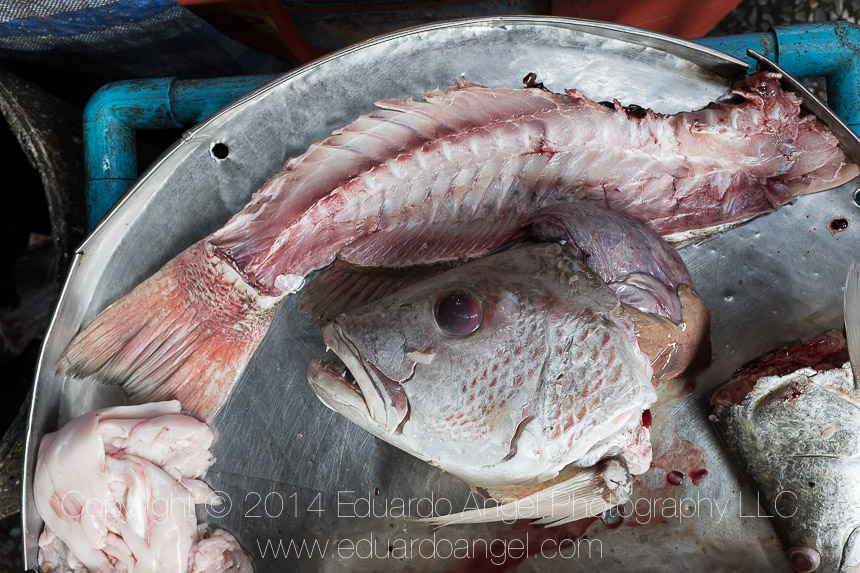
Traveling to Bangkok? Let me share a few tips.
Traveling to Bangkok? Let me share a few tips.
Don’t waste your time visiting the National Museum. The key galleries are being renovated so there’s very little to see. Keep in mind that no backpacks are allowed in the museum so you must leave your photo gear at the ticker counter unless you plan ahead.
Ah, the mysterious Thai cultural center. The first mission of this center should be to inform Thais of its existence. Even though I checked the map and asked a taxi driver, two cops, a receptionist, and even an official-looking guy in a suit, I wasted more than two hours trying to find the deserted center. Not a single employee spoke English and all the written information was in Thai.
I hate shopping malls, but in Bangkok they proved to be my best ally. Not only I could find clean restrooms and extremely cheap bottles of water (1.5 liters for 50 cents as opposed to 250ml for $8 dollars at my hotel.) Most malls also have a food court, selling the same food as street vendors and for almost the same price, but with a much more comfortable place to sit and rest.
In many countries, people don’t want to be disrespectful, so they make something up when you ask for directions, even if they have no clue what you’re talking about. I generally ask at least two different people to verify the info, and most of the time I get conflicting answers.
In Bangkok and especially in Chiang Mai you don’t even need to buy bottled water. You will find a 7/11 as often as you would find a Starbucks or Chase branch in Manhattan.
Do not rent a motorcycle in Phuket. Nobody will tell you this, but you need a Thai driver’s license. An international driver’s license only works IF you meet an honest cop who speaks English, which means, it doesn’t work. The traffic ticket costs $500. Not wearing a helmet will cost you another $500. No, I didn’t get a ticket, in case you were wondering!
We truly appreciate your support for this and similar project by purchasing My Asia • Photo eBook (iPad)
The PDF Version is herePDF version is available here, and the printed version from Blurb is here.
Video
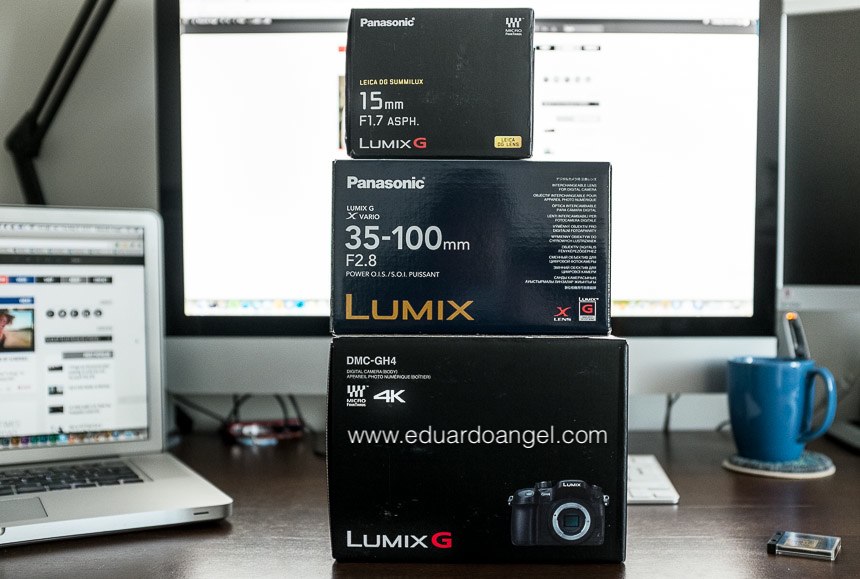
Discussing the Panasonic Lumix GH4 LIVE!
Wow! That was quick. I was invited earlier today to join Mathew Frazer, a senior field trainer and product developer with Panasonic USA (with over 20 years experience in the industry) and David Flores a NY photographer and filmmaker who shoots for clients like General Electric, Willett Distillery, the Audubon Society, Sawyer House Press, Adelphi University, Kentucky Bourbon Marketplace, Northwestern University Press, and many more.
We discussed the pros and cons of the Panasonic GH4, the best memory cards, batteries, what 4K means for filmmakers and photographers and answered a TON of questions sent to us via Twitter.
The event took place at B&H and you can watch the complete recap of our session right right here:
UPDATE 20140530: Since MANY of you have been asking about the gear we used, here’s the list:
Panasonic GH4
Panasonic 12-35mm f/2.8
Panasonic 35-100mm f/2.8
Syrp Genie
Cinevate Pegasus
Benro S8 Tripod
Benro S6 Monopod
Comodo Orbit
Rode Videomic
A couple of 4K + Slow Motion samples that were not covered during the live session:
Dance from The Digital Distillery Inc. on Vimeo.
Dance Behind the Scenes from The Digital Distillery Inc. on Vimeo.
And here are the sample/test clips I showed during the live discussion (make sure you watch them at the highest resolution):
A lot of the topics we discussed are included on our upcoming eBook “Filmmaking Essentials for Photographers.” Get your free copy while you can. More questions? Send us a Tweet!
Video
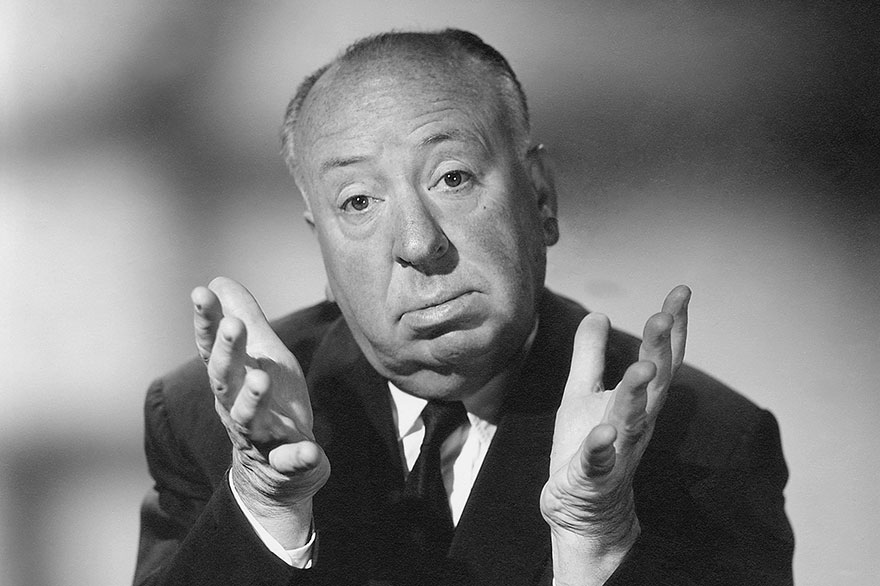
My Top Ten Favorite Articles of Last Week.
These are my top ten favorite articles of last week, in no particular order.
How to Make a Film Like Alfred Hitchcock: A Breakdown of the Master’s Techniques via No Film School http://bit.ly/RtfwEO
Video Test: Samsung Galaxy Note 3 Versus the Canon 5D Mark III http://bit.ly/RtgUac via Petapixel
Thanks to Google Glass, we can watch an IndyCar pit crew at work via Digital Trends http://bit.ly/RtgWiv
Japan man held over ‘3D-printed guns’ http://bbc.in/RtgZLh via BBC News
Epson’s Glass-like ‘Moverio’ specs go on sale for $700 via Digital Trends http://bit.ly/RthJ2U
Is it true? New service detects processed photos http://bit.ly/RthLbc via DP Review
Fascinating Book Described Thousands of Colors 271 Years Before Pantone http://bit.ly/1k8l0PK via Petapixel
The 20 Worst Summer Blockbusters Ever http://bit.ly/RtfsEV via The Playlist
As Digital Cinema Shooting Reaches 4K, 6K, & Beyond, How Will Post Production Keep Up? http://bit.ly/1k8rVZj via No Film School
What’s The Difference Between A Font And A Typeface? http://bit.ly/1jNky55 via Fast Company
If you have something worth sharing next week, please send it my way by email or Twitter.
Photography
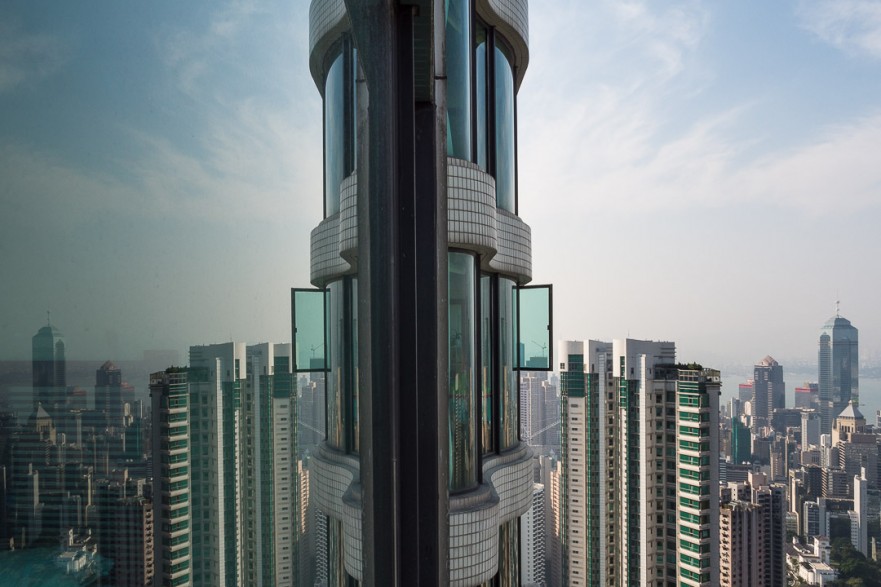
Hong Kong: The quiet city.
The quiet city.
Comparisons between Manhattan and Hong Kong are inevitable: Both are islands, have many skyscrapers, high-population densities, and crazy real estate prices. Both are magnets for money and people looking for opportunities. And both offer food prices that range from dirt cheap to insanely expensive. Hong Kong has 7.1 million people and a density of 17,024 people/sq. mile while New York has a population of 8.1 million and 27,550 people/sq. mile.
But, Hong Kong is different. VERY different. From the time you touch down, it takes less than an hour to move through immigration, travel to the baggage claim, and board the spotless and quiet express train. That’s easily the wait time at JFK’s taxi line. In Hong Kong every driver spoke English, helped us with our bags, turned the meter on without our request, knew the most efficient way to our destination, charged the exact fare and gave us exact change. I can’t recall the last time I didn’t have to give step-by-step directions to the airport’s cab driver in NY. Then, of course, I have to pay $60 for the privilege of doing their job. My wonderful taxi experience cost $10 in Hong Kong. The city is clean, modern, and efficient. It feels safe and full of opportunities. Most subway stations have shopping malls attached, with spotless restrooms, restaurants, and parks. It shocked me how quiet the city is. In three days we didn’t hear one siren. I wish I could say the same about Brooklyn.
Amazingly something like 80% of the island is a natural reserve. If you get tired of city life, you could simply take the 30-minute express bus for only one dollar to Stanley market, which is on the opposite side of the island and offers landscapes that compete with some of the best I saw in Vietnam. I recommend all visitors take the super-convenient double decker tram system and the a spectacular ferry ride. Each will cost 30 cents in American currency making them one of the best tourist bargains in the world.
Building the puzzle
Traveling to me is like building a puzzle without a reference image. Or, perhaps a chess game where you are one of the pieces moving from one place to another, deciphering maps, and memorizing names with 15 characters that look just like all the other names. It is all a fascinating game played in real time, without cheat codes, or escape menus. Just you and the new place you are about to discover.
There are tourists and there are travelers. The tourists are afraid of the unknown, the different. You see them eating at Subway or McDonald’s right next to the local food market. I am a traveler. I adapt to local customs, eat what the locals eat, enjoy trying new things, push my boundaries, embrace feeling uncomfortable, and have a blast getting lost. There’s truly nothing like traveling to recharge the soul. I love to reconfirm every so often that people are good and generous by nature, and that the universal currency is not dollars or Euros, but smiles.
We truly appreciate your support for this and similar project by purchasing My Asia • Photo eBook (iPad)
The PDF Version is herePDF version is available here, and the printed version from Blurb is here.
Video
Dance!
Dance! dance! dance! dance! dance! dance! dance! dance! dance! dance! dance! dance! dance! dance! dance! dance! dance! dance! dance! dance!
Dance. from The Digital Distillery Inc. on Vimeo.
Everything in slow motion was shot at FHD 96 fps with the Panasonic GH4. Everything else was shot at 4K (QHD or 3840×2160) with the same camera.
The only “grading” done was the B&W preset on Adobe Premiere Pro CC.
Maddy, our beautiful and super talented dancer often performs in New York City. Here’s the Facebook Page for her last event: https://www.facebook.com/
UPDATE 20140530: Since MANY of you have been asking about the gear we used, here’s the list:
Panasonic GH4
Panasonic 12-35mm f/2.8
Panasonic 35-100mm f/2.8
Syrp Genie
Cinevate Pegasus
Benro S8 Tripod
Benro S6 Monopod
Comodo Orbit
Rode Videomic
Photography
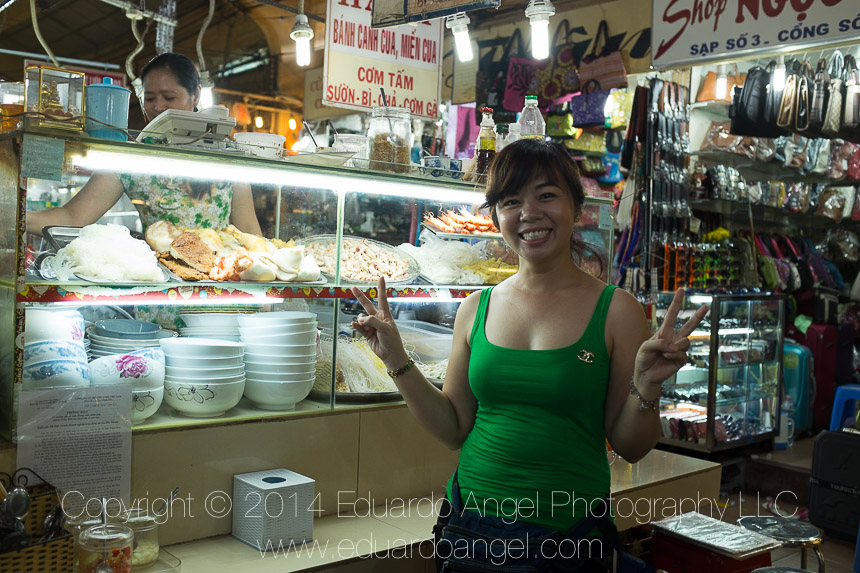
Sir, you are crazy! Welcome to Vietnam.
Sir, you are crazy!
My growing up in Colombia turned out to be a huge advantage for traveling in Asia. We Colombians and Asians have a lot in common. We can cross avenues with hundreds of motorcycles zooming past. We understand that sidewalks and stoplights are mostly symbolic. It’s in our blood that the asking price for an item is merely a suggestion and we can haggle until the end of time. We can smell danger coming. We can eat almost anything without getting poisoned. We have a superhuman ability to locate and exterminate bugs. Coming to Asia makes you realize that growing up in a third world country has key advantages.
In Ho Chi Minh City I received the best compliment ever: “Sir, you are crazy! You are like the American chef on TV!” The gentleman in question was referring to Anthony Bourdain and the reason for the wonderful reaction was simple. When traveling alone, I like to ask cab drivers to take me to THEIR favorite lunch or dinner spot. They always know the best places in town. My driver and I feasted on Pad Thai at the eatery where he takes his girlfriend. It was the best Pad Thai I’ve had in my life. And it cost $1.50.
Friends often wonder how I obtain access to so many interesting and often difficult-to-infiltrate places. The answer is fairly simple—I ask questions. One example: while having breakfast I asked my waitress for sightseeing recommendations. She sent me to the War Museum. There I saw three geisha-looking women entering a room. I went to see what was going on and I was told it was a private Tea Ceremony for the Japanese Consul. After a quick introduction and talking to the right person, I was invited to stay, and for four hours I witnessed a fascinating Japanese tradition at the War Museum in Ho Chi Minh City. All because I simply started asking questions
Halong Bay was breathtaking, but after Thailand, Vietnam was disappointing. Sadly, the vast majority of Vietnamese we dealt with were unnecessarily rude, or, at best, simply didn’t care about engaging in anything that didn’t represent money changing hands. I was told that this `is a common expression of independence. Vietnam has a cultural history of more than 20,000 years—that’s one of the longest continuous histories in the world. They have been the target of so many foreign aggressors that yelling “no!” to a foreigner must feel great. Unfortunately, tourists don’t understand, nor appreciate, this behavior and will increasingly choose friendlier countries like Thailand, Laos, Cambodia, and Singapore in which to spend their time and money.
At any major tourist destination it is nearly impossible to walk for more than 30 seconds without having to stop for someone taking a picture. The weapons of choice are iPhones shooting vertical video and tablets with very thick covers for stills.
Also trending are what I call the IVSTs (iPhone vertical video self-portrait tours). The culprit chooses the busiest walking intersection at a popular tourist destination and records themselves talking nonsense about the place. An example: “this is the largest temple in the world and it is very old.”
We truly appreciate your support for this and similar project by purchasing My Asia • Photo eBook (iPad)
The PDF Version is here PDF version is available here, and the printed version from Blurb is here.
Video
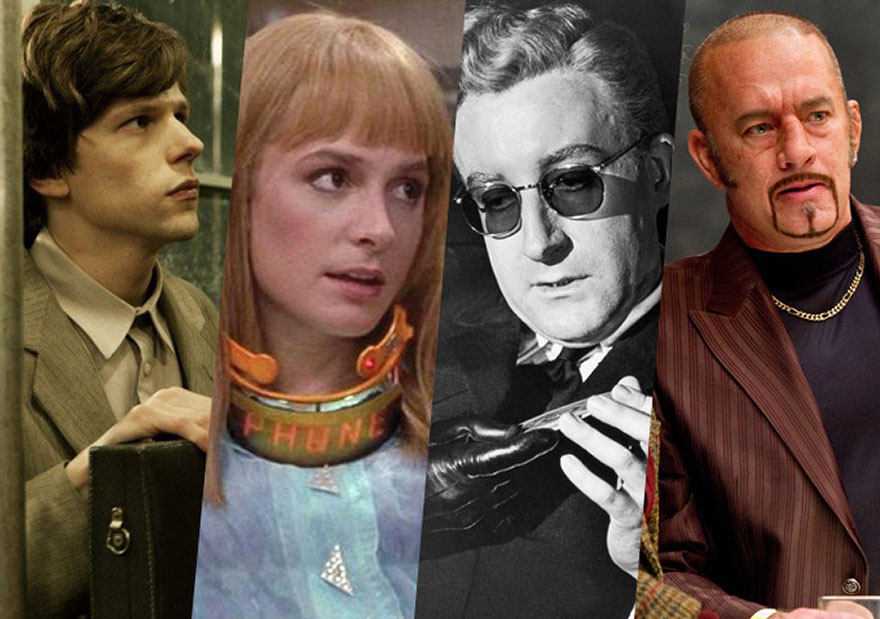
My Top Ten Favorite Articles of Last Week.
Starting last week, I’d like to share the best 10 articles I’ve read over the past week. I’ll try my best to stick to photo and film articles, but sometimes I might add cool and random stuff. If you have something that should be included please send it my way by email or Twitter.
10 tips for editing video in a thoughtful, compelling way http://bit.ly/1k8lfue via TED Blog
Improved 4K display support in OS X 10.9.3 http://bit.ly/1k8k9OW via Macworld
4K TV shipments skyrocketed last March, exceeding 1 million units http://bit.ly/1k8kDVs via Digital Trends
Lots of Sony news: Sony Ditches OLED TVs (again) to Concentrate on 4K Ultra HD http://bit.ly/1k8kjpw and Sony Sold 39 million Android Phones in 2013 http://bit.ly/1k8krW9 both via Digital Trends and Sony forecasts losses until 2015 after PC exit http://bbc.in/1k8knWy via BBC News
DaVinci Resolve 11 Adds Powerful Editing and Media Management Tools http://bit.ly/1k8kwsX via CineTechnica
The Best Marketing Decision You’ll Ever Make http://bit.ly/1siPIs6 via Inc.com
14 Powerful TED Talks by Photographers http://bit.ly/Rm4zom via Petapixel
The Special Effects in Only God Forgives http://bit.ly/1fP2gVU via Filmslie.com
10 Films In Which Actors Play Multiple Roles http://bit.ly/Rtfixb via Indiwire
News
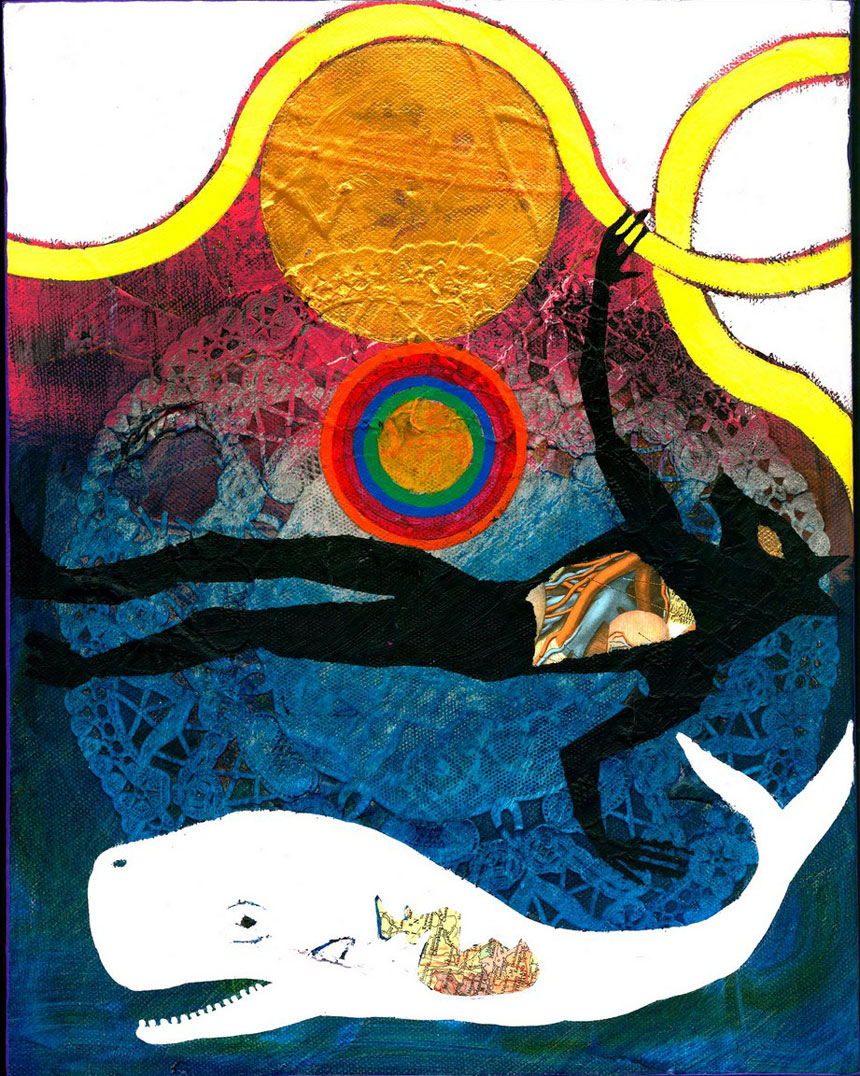
Thinking Big: Alice in Wonderland.
Thinking Big: Alice in Wonderland Kickstarter.
by Alice DuBois
William Blake, Diane Arbus, Walt Whitman, Frida Kahlo…So many artists we love now had a real struggle just to make ends meet. We wonder how we could do without Arbus’s incredible, fearless eye and Blake’s luminous vision of the woes and exaltations of humanity. However, their realities were difficult: Arbus had to teach to make ends meet when she should have had free reign to take all the photos she could, Whitman had to spend his own money to publish “Leaves Of Grass,” and Blake spent his life in a constant struggle, never getting paid well and never really being appreciated. Now they are all hailed as geniuses.
I’m a painter, and certainly not a genius, but I feel a real kinship with these artists and all the others who were, and are, faced with the struggle of making a living and staying true to their vision. I’ve been painting for 19 years, nine of which have been as a full-time artist. It’s been a real trial trying to make work that I feel is truly from the heart. I’ve struggled to make work that at least strikes a balance between what I want to do “from the heart” and what I know I can sell.
It’s been truly difficult, especially in these sour economic conditions, to make a living. I started out hoping to be my own sales person, using new technology to reach art lovers without the help of a gallery. But what I’ve come to realize is that this is too hard for me to do on my own. After nine years of making minimum wage with art that I feel is worth much more, I’d like to turn a corner in my career and partner with a gallery.
In order to make a break from this cycle of just making small, sellable art, I have a Kickstarter project to fund the creation of several larger pieces. My hope is that these paintings will help me attract a gallery that I can partner with. My goal is fairly modest—$2,000.
These funds will afford me the time and supplies to make some larger work. As of May 7 I’ve raised half of my fundraising goal—and there are just two weeks to go. I hope you will take a look at my Kickstarter video and my artwork and judge for yourself if my art is worth more than minimum wage.
Photography
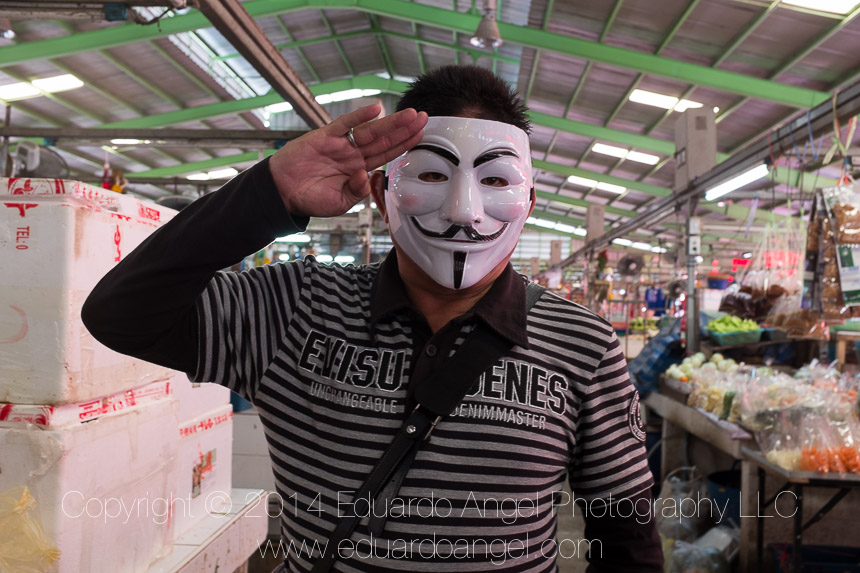
Thai people and the guardian of wealth.
The guardian of wealth.
Proud and humble don’t seem to fit in the same sentence but Thais are proud, yet humble, people. You can see it in their eyes, and the way they treat each other.
As in all my travels, my most rewarding and exciting experiences are the exchanges with locals. Spending quality time chatting with locals like Krit, a very hip computer animator, or Mr. Tanta, a very proud police officer, gave me a much deeper understanding of Thailand than any book, movie, or tourist tour could ever do.
I spent a lot of time talking with Buddhist monks who inevitably would ask my name and then ask what it means. Eduardo, for the record, means “the guardian or keeper of wealth, where wealth could be understood as knowledge.” Chatuphon, my 17-year-old friend photographed here means “the four blessings” which are: A long life, Be rich, Be strong, and Be healthy. I’d say that’s a powerful and meaningful name.
By far, the most fascinating character on this trip was Eak. Now in his mid 40s, Eak was born and raised in Switzerland by a Thai mother and Swiss father. He speaks PERFECT German, French, English, Thai as well as some Spanish. He visited Thailand for the first time when he was 20 years old and told me that he suffered a culture shock. “I didn’t understand why these people, my relatives included, chose to live under such poor conditions,” he told me.
After working for a very large and well-known corporation in Zurich, and making, according to him, “more money in one hour than what he now makes in three days,” he returned to Thailand to take care of his dying mother. “I was in shock for an entire year.” He now works as a driver in a boutique hotel in Phuket. Are you planning to go back to Zurich? I asked. “The life quality is here, but the money is there. I still don’t know what to chose.” I can certainly understand his answer.
Phuket is both an island and a province, the largest in Thailand and about the size of Singapore. Places like this are like paradise. No rocks, no corals, no trash, not even shells. Just very fine sand and body-temperature water so calm that you could mistake it for a pool. The only sounds are the waves crashing, a few birds chattering, and the occasional jet ski.
It seems that the only requirements to open a bar in Chiang Mai are a pool table, a fan, a bottle opener, and the willingness to ask foreigners if they are interested in receiving a massage.
We truly appreciate your support for this and similar project by purchasing My Asia • Photo eBook (iPad)
The PDF Version is here PDF version is available here, and the printed version from Blurb is here.
Photography
How to desaturate shadows for 3D contrast.
Digital capture technology is really awesome and has truly changed photography, improving it in a multitude of ways. But sometimes, digitally captured images have a certain exaggerated colorfulness, that just looks a little off, for those of us raised on the old fashioned film days! I have found that this has to do with the way color gets saturated as contrast increases. Even standard rendering presets increase contrast a bit through a global RGB composite curve, often indirectly. It seems that when contrast increases this way a global increase in saturation results that increases the chroma, or colorfulness, evenly throughout the image. This makes shadow values unrealistically colorful. Our natural perception of color decreases with reduced light, such that, as a shadow approaches black, color saturation is gradually reduced to zero. If you can correct for the tendency to increase color in the shadows as contrast is increased, you can achieve a more natural sense of contest and 3D shape in the image.
Lets take a look using the following example:
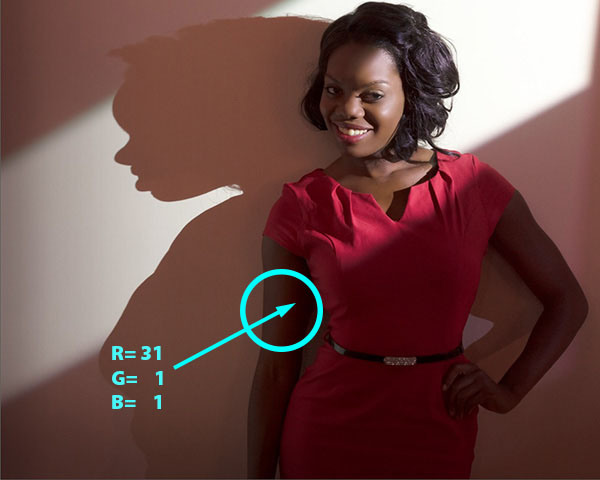
The RGB values in the arm, right before it goes to zero black is 31, 1, 1 – way too colorful for a shadow this dark!
Looking at the deep shadow at her right arm, we can see a subtle region of exaggerated color in the deep shadow. Reading the RGB values confirms this—the reading of 31,1,1 is unrealistically colorful—we can see a sort of band of extra deep color right next to the black shadow. This is the bane of digital capture, in my humble opinion! Lets see what happens when we fix this.
Start by selecting Solid Color from the adjustment layer icon at the bottom of the Layers panel – this type of layer is not available from the Adjustments panel, so you have to get it there! The idea is to use this gray color to desaturate the underlying layers selectively – right now the solid gray covers up the whole image! Now we will use Blending Options to change how this gray interacts with the image – select Blending Options from the layer options flyaway menu at the upper right corner of the Layers panel.

Select “Blending Options…” from the flyaway menu in the Layers panel
The Blending Options dialog is where we can adjust the layer blending so that the gray is only covering the shadow parts of the image. To do this move the white slider to the left until most of the image is revealed with only the darkest parts covered by gray!
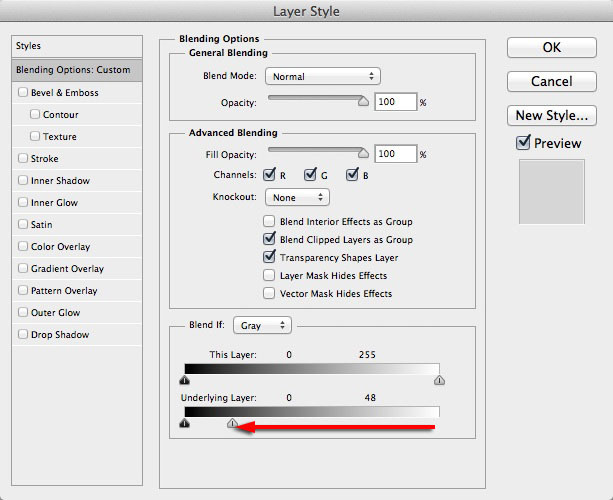
Move the white slider to the left to reveal the brighter parts of the image.
Now we have to soften the transition of the gray color so it blends smoothly. To do this, break apart the white slider into two haves by option/alt – dragging it apart and to the left! Don’t hit “OK” yet – there’s one more thing to do…

Option/alt drag apart the white slider into two halves to soften the transition of gray into the shadow parts of the image.
The gray color now blends smoothly into the shadows…
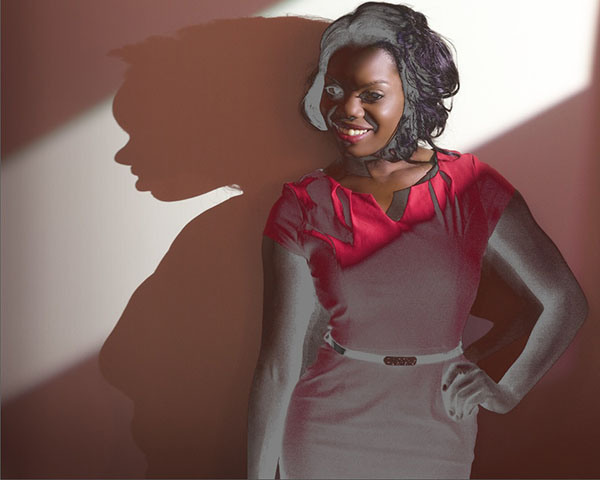
The gray color blends smoothly based on how wide the slider is split.
Of course, we aren’t going to use the image like this—we can change the layer blend mode from normal to color, right in the Blending Options dialog or in the Layers panel!
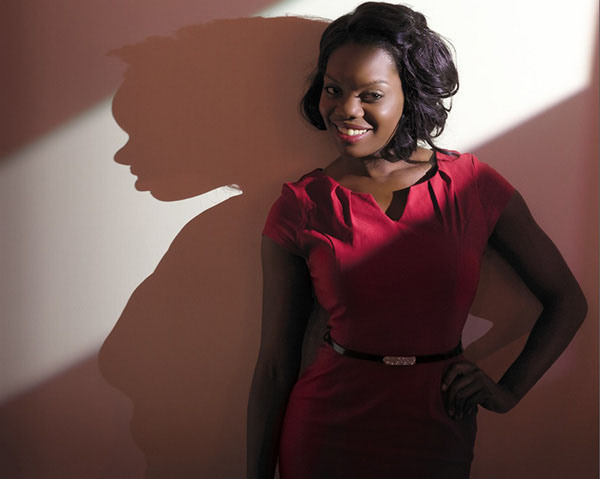
The de-saturated shadows actually look darker, even though they are the same luminosity as before – the eye sees less saturated color as darker!
Compare this image with the first in the series. The de-saturated shadows look darker, giving the image better contrast in the shadows, eliminating the band of rich color next to the darkest shadow. I often reduce the opacity of the de-sat layer just a bit and sometimes work the layer mask selectively to bring back a little color where I might like it—I did that here, masking it off her right side to “highlight” the shapely curves of her torso.
It is surprising how powerful this simple technique is! The subtle de-saturating of shadows most often results in more dimension of shape in the shadows and makes the image look more natural and less “digital”
——
To see a more detailed version of this post go to Lee’s website.
Lee teaches techniques like this in his PPSOP class: Portrait Retouching Fundamentals:
And he also teaches a Photoshop Layers class.
For even more advanced techniques, check out Lee’s Photo-Illustration course.
Photography
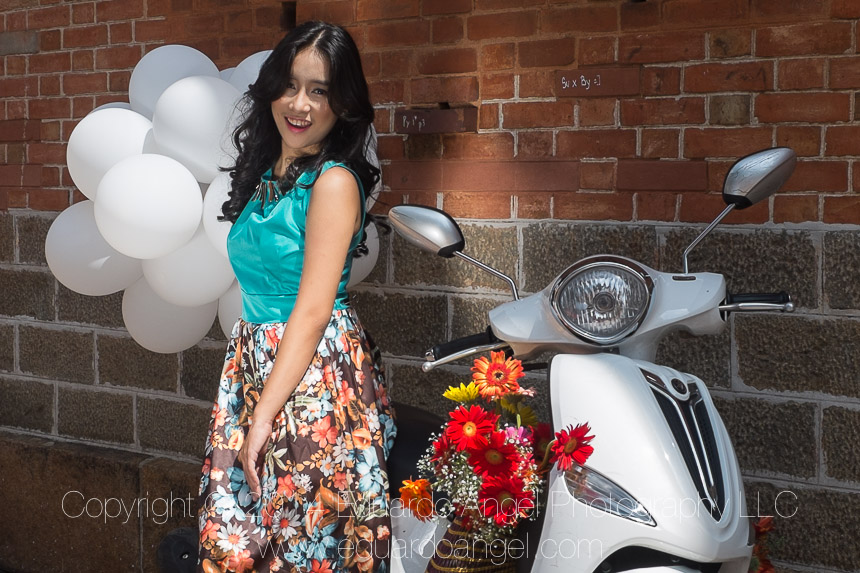
Traveling to a foreign country is like falling in love.
Falling in love.
I’ve always believed that traveling to a foreign country is like falling in love. All your senses are heightened; everything is new, exciting, and mysterious. You can almost taste the colors and touch the smells. You experience mundane things like the rain or city lights from a different perspective. This is especially true in places where I don’t speak the language. It is wonderful to be unable to understand most billboards and ads!
Architectonically, Bangkok is similar to South American capitals like Bogota or Santiago, but hotter. Other key differences include an efficient subway, an impeccable elevated train, express buses, and a wonderful river taxi system (local, semi express, and express). The signs and ways to purchase tickets are so well organized that even without help one can understand and navigate the system right away. The city is shockingly clean, safe, and well organized. When compared to New York and other “world capitals,” Bangkok is years ahead.
The mid-sized Lumphini Park is a small-scale version of Central Park right at the heart of the city. I arrived at sunrise, looking to photograph people jogging and meditating, and, indeed, I found that. However, I also spent some time with a tai chi master, was invited to have breakfast with a group of retired Chinese folks, and photographed a woman who in the 70’s was the number-one dancer in Thailand and number-three in all of Southeast Asia. Now she teaches others how to dance tango. She even gave me an autographed photo of herself!
The food in Thailand is phenomenally tasty and affordable. I often had lunch with an appetizer, two entrees, dessert, and a Pepsi. All for a bit less than three dollars, including tip. Here’s another tip: I strongly recommend that you NEVER peek behind a street vendor’s shop. It ain’t pretty. Trust me.
It always takes a few days to flush the “New Yorker” in me out of my system. I want things to be quick and efficient, and I hate to wait. People in Thailand, especially outside Bangkok, are NOT in a rush. It can be frustrating trying to squeeze in tiny corridors with hundreds of people moving slowly, or waiting forever for someone to show up. The only real option is to adapt, slow down, and go with the flow.
If you want to discover the local habits and avoid touristic clichés, Khlong Toei Market is the real deal. For two hours I was the only foreigner and the only one with a camera. A traveler’s paradise. It’s a short walk from the National Convention Center and it’s challenging, but it’s totally worth a visit. The fish and crabs were still alive, the calamari was swimming in its own ink and the pigs’ heads were still bleeding. Don’t wear flip-flops or sandals—what looks like blood is blood. Wear a shirt that you can wash right away, and plan to take a long shower immediately after visiting this market. The smells will stick to you, but so will the experience.
The first few days of visiting Buddhist wats are fascinating. All those colors and details. So much history, and so many traditions I can’t even begin to understand. The Emerald Buddha (which is really carved from green jade) was first DISCOVERED in 1434. The sacred image wears one of three seasonal costumes: Summer, Rainy Season, and Winter.
I was told that in Buddhist wats, the bells toll three times a day: once to announce the start of the day, once at noon, and once to signal the end of the day. Monks are prohibited from growing their own food, storing their own provisions, or cooking their own meals. I was very surprised to know that some of them are not vegetarians. In Thailand, they rely on whatever is freely given to them by others, and this might include meat. The monks eat twice a day—breakfast at 7 a.m. and lunch around noon. After that, they are only allowed to drink water and other liquids, but they can’t eat solid food and they can’t store food overnight.
After a few days of visiting wats, your eyes and mind stop seeing—you are there, wanting to be moved and inspired, but the feeling is harder and harder to recapture. In Europe we can get overloaded by visiting too many churches and museums in too short a time. In Asia, one can quickly experience wat and crowd overload. Be sure to enjoy those first few days of innocence and wonder.
Bangkok’s Chinatown is like the opening sequence from the 1994 film Chungking Express—chaotic, overcrowded, packed with long and narrow hallways, and hundreds of people walking extremely slowly. The two competing shopping malls are “China World” and “India Emporium.” It seems like a good commercial representation of the world.
We truly appreciate your support for this and similar project by purchasing My Asia • Photo eBook (iPad)
The PDF Version is here PDF version is available here, and the printed version from Blurb is here.
News

My Top Ten Favorite Articles of Last Week.
Starting today, I’d like to share the best 10 articles I’ve read over the past week. I’ll try my best to stick to photo and film articles, but sometimes I might add cool and random stuff like this http://bit.ly/1siMS69 or this http://bit.ly/1siPfpD.
If you have something that should be included please send it my way by email or Twitter.
So, here are my top ten favorite articles of last week, in no particular order. Let’s see how this goes.
1. Sony tape smashes storage record http://bbc.in/1siNoRD via BBC News and Sony’s in a ‘bag of hurt’ because of Blu-ray http://bit.ly/1siKWe9 via The Verge
2. By 2020 Apple Won’t Be A Top-3 Tech Company http://tcrn.ch/1siLaBY via TechCrunch
3. Fog, Smoke, & Haze: The Swiss Army Knives of Cinematography Tools http://bit.ly/1siNqZK via No Film School
4. One Perfect Shot Twitter Account Reduces Movies Into a Single, ‘Perfect’ Frame http://bit.ly/1siLRLn via Petapixel
5. George Steinmetz Wonders: Was It Worth Getting Arrested for National Geographic Cover Story Photos? http://bit.ly/1siM0OY via PDNPulse
6. What Hardware do you Need to Run Stuff at 4K Resolution on your PC? http://bit.ly/1siN3yr via Digital Trends
7. Mid-2014 MacBook Air SSDs Run Much Slower, New Benchmarks Show http://bit.ly/1siNlVW via Digital Trends
8. Negotiate like a Pro by Acting like a Child http://bit.ly/1siLLnc via 99U
9. Funny TED Talk Spoof for an App that Turns Photos Into Music http://bit.ly/1siPO2X via Petapixel
10. Managing Creativity: Lessons from Pixar and Disney Animation http://bit.ly/1i7Q2lB via Harvard Business Review
Video
I Just Got a Panasonic GH4 – Now What? Batteries.
First, the good news. If you already own a Lumix GH3 like we do, the GH4 uses the same exact batteries. The majority of camera manufacturers and other companies like Apple could follow this strategy for a change!
The OK news is that while the DMW-BLF19 battery (one included with every body) is really good, we generally go through two or even three batteries per camera on a video shoot. The Panasonic branded battery goes for $45 on Amazon.
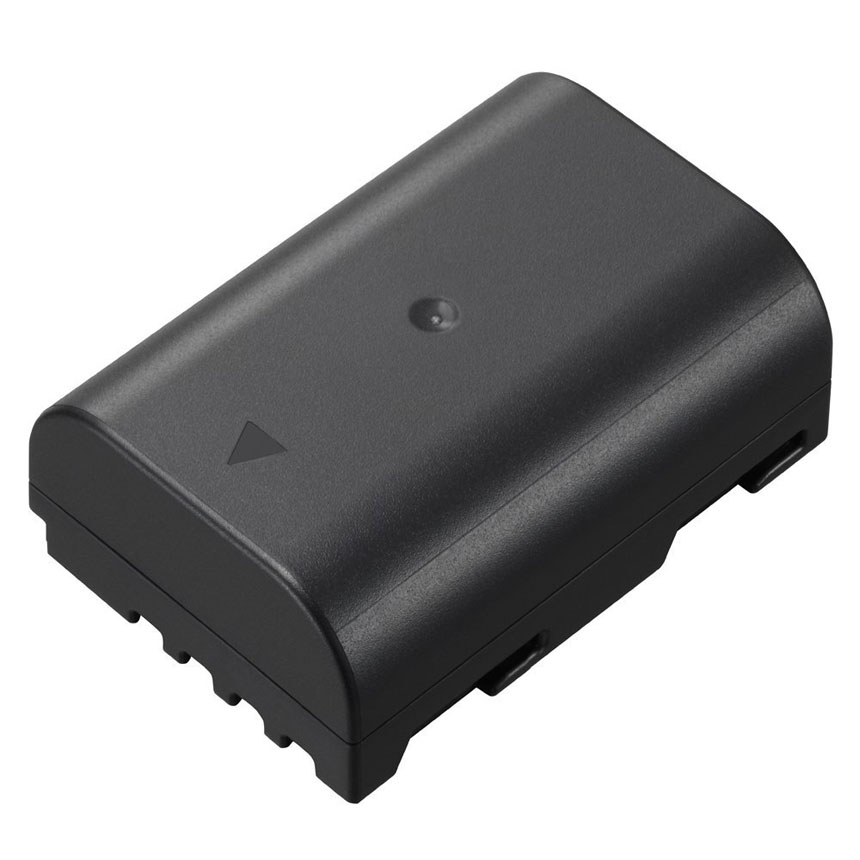
Panasonic DMW-BLF19
A cheaper option is the Wasabi branded version that costs a THIRD of the price ($14.79 on Amazon). Now, an event BETTER deal is the Wasabi kit, which includes TWO batteries and one charger with a European plug AND a car adapter. The price: a no-brainer $31 on Amazon.
I purchased a very similar kit for the Fuji X100S and so far have not seen ANY significant difference in performance between the original Fuji battery and Wasabi’s.
Related Posts
I Just Got a Panasonic GH4 – Now What? Hard Drives.
I Just Got a Panasonic GH4 – Now What? Memory Cards.
7 things we discovered after shooting 4K with the GH4. You won’t like #4.
Dance! The first of a series of videos shot for Panasonic USA to promote the new Panasonic Lumix GH4.
Video
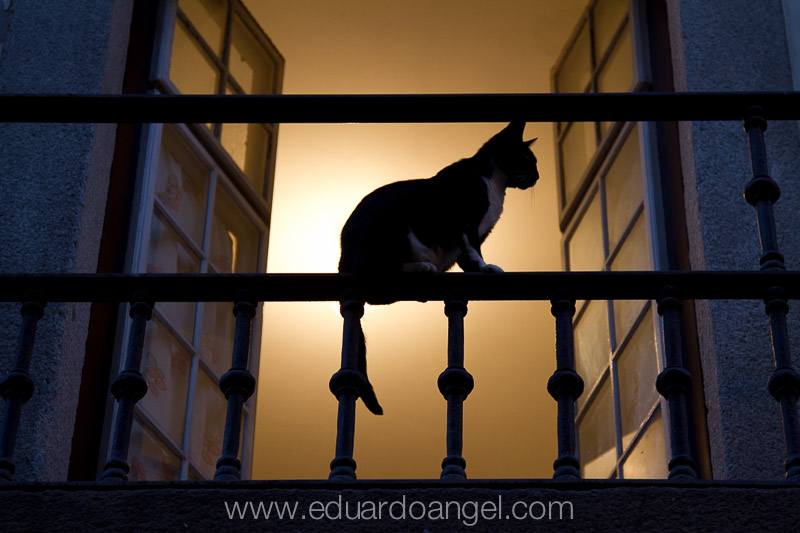
6 Lighting Tips for Shooting Video.
Here’s the thing — we can make a film without sound, without color, and without a single camera movement, but we can never make a film without light. Wehile we can sometimes use available light or cheap practical lights, here are a few things to consider:
1. The biggest advantage of natural light is the price. It is readily available and doesn’t cost much to harness or enhance. If nothing changes and everything can be accomplished in one shoot, one can probably get away with this method.
2. Unfortunately, video often requires shooting over extended periods of time, and tear down and reproduce scenes shot days or weeks before. Additionally, as professional photographers and filmmakers we can’t rely on clouds, having enough windows, or even the weather forecast.
3. We often have to work fast with limited tools. A typical example for us is shooting B-roll the same day we arrive to a new city. Understanding simple techniques like harvesting harsh noon sunlight, or harnessing available shade can make or break a day on location.
4. Even when we can carefully plan our shoot, we need to truly understand the role of lighting in our story so we can select the ideal tools and techniques to develop it.
5. I find it fascinating how warm tones pop out of the frame, while cool colors recede into the frame. Or how through proper lighting we can make the same exact scene look peaceful, enigmatic, elegant, happy, or even scary.
6. As photographers and filmmakers, light is our palette. With light we can provide a sense of space and establish a time of day. We can create beautiful morning light in the evening as well as spectacular moonlight at noon.
Light is such a powerful and adaptable element that by understanding it and mastering it, we can greatly enhance our video productions without breaking the bank. Check out this tutorial, using ONE utility light during daytime:
Like these tips? That’s exactly what my course “Lighting Design for Video Productions” is all about.
Additional free video tutorials are available here!
UPDATE: May readers and Lynda.com subscribers have been asking about the equipment we used on our Lighting course on Lynda.com. Here are the answers:
We used a variety of lights, but the main ones were Bowens Limelite Mosaic 30x30cm Daylight LED Panel.
As our A Camera we used a Canon EOS C100 Cinema EOS shooting to an Atomos Ninja-2 recorder. As our B and C Cameras we used a couple of Canon EOS 5D Mark III. We used a variety of lenses, but the main one was the Canon EF 70-200mm f/2.8L IS II USM.
Photography

From New York to Tokyo. Fanning the smoke.
Fanning the smoke.
My visit to Japan wasn’t planned. My Delta flight from JFK to Tokyo was delayed and I missed my connecting flight. With 24 hours at my disposal I took this impasse as an early and welcomed present. My brief visit to Japan was smooth and easy. Everything is properly organized, scheduled, packaged, and explained. The people are so polite and friendly that I felt like a celebrity everywhere I went. So many folks were so happy that I wondered if this was all just a performance!
If you are ever stranded near Narita International Airport, it doesn’t make a lot of sense to go to Tokyo unless you have at least 12 hours available “inland.” Additionally, my wife and I have planned to visit Tokyo together for a long time, so I didn’t want to spoil our dream destination. I chose going instead to the magnificent Naritasan Shinshoji Temple.
It was deeply moving to see people of all ages at the temple, all showing a sincere and profound respect for their surroundings. Visitors washed their hands at the purification fountain and some even rinsed their mouths before entering the temple.
Americans are impressed with buildings or furniture that’s one-hundred years old. Europeans are proud of their four-hundred-year-old cathedrals. Here, you can witness one-thousand-year-old temples and truly ancient objects (Naritasan was built in 940 CE). You can feel history and tradition in the air, which, from a distance, smells like wood and incense. I later realized it is customary to burn incense and offer a prayer, then extinguish the flame by waving the hands, and fanning some of the smoke toward the person, as the smoke is believed to have healing powers.
Many religions believe that burning incense is good for the soul, but in Japan it is also an indicator of refined taste. Seeing my amazement, and perhaps all the time that I spent trying to capture the essence of the moment with a tiny camera, one of the temple keepers approached me. I assumed he was kicking me out. On the contrary, he was eager to see the images I was taking and more than happy to answer my endless questions. During our brief and fascinating conversation he mentioned that during World War II, most bells in Japan were melted down to make weapons and that 70% of all of Japan’s incense is manufactured on one tiny island south of Osaka called Awaji.
A few more interesting snippets about my brief time in Japan: Contrary to what I have read over the years about the country and my experience with Japanese people I have met on the road, I was a bit surprised by the lack of people speaking English. Case in point, high school students couldn’t understand me when I asked for directions. One associates Japan with fish and sushi, but I saw and ate more meat in Japan than in any other country, except Argentina. Finally, what’s with the heated toilets? If there’s a cultural explanation for this, please shoot me an email.
The Intro to this project is available here.
We truly appreciate your support for this and similar project by purchasing My Asia • Photo eBook (iPad)
The PDF Version is herePDF version is available here, and the printed version from Blurb is here.
Photography
How to Color Correct for Skin Tones.
I have found that careful attention to basic color correction principles can help re-calibrate our subjective evaluation of an image to a point where effective adjustment choices can be made. I also find it extremely helpful to get as much practice as possible working on other people’s images, as this helps us become more objective about our own work! I have the good personal fortune of benefiting from the work of my fiancé, the amazing Bobbi Lane, who happens to be a really extraordinary portrait photographer! I will examine my decision making process in a recent color correction of one of her images in this post.
The original image is on the left with the final corrected version on the right. The original isn’t horrible, but it suffers from what I call “pumpkin skin” – just a bit too saturated an orange color. I always use the info panel numbers in Photoshop to help me decide how to approach color correction. The key to evaluating a skin tone is to look at the CMYK numbers at the upper right of the info panel. A good skin tone is all about the ratios of CMY in the secondary color readout. Ideally, yellow and magenta should be closer to each other than either is to cyan – cyan should be between 1/3 and 1/4 of the average value between yellow and magenta, and yellow should be a little higher than magenta – for a fair skinned blond, about 10% higher!
The screenshot above shows a reading from the skin color at the chin – there are two columns of numbers here because I had already added a Curves layer when I did the screenshot, normally there is only one for RGB and CMYK. The two columns are identical at the moment because no adjustment is being made, this allows you to compare adjusted with non-adjusted numbers. As I said, the cyan should not be much lower than 1/4 of the average between magenta and yellow. In the numbers above, that average would be 53 – cyan at 10 is just a little low, not horribly low, but that combined with the slightly elevated yellow (relative to the magenta) confirms my suspicion that the skin is just too colorful. In fact, this skin color is very reminiscent of an artificial tan, spray-on type of color that is sometimes used by body builders in competitions!
In order to correct the skin I want to affect the RGB numbers to get the ratios in CMY to change. If we look straight across from the top row of numbers we can see that R lines up with C – if I want the cyan value to go up, I need to do the opposite to red, the red value has to go down! In this image the red channel is very pale (a higher number in the info panel) if I want the red value to go down, I need the red channel to be darker in the area of the skin)a lower number). I could potentially use a Curves adjustment, targeting a point on the skin, but this point is very high up on the Curve so it will be harder to lower it without adversely affecting other tones.
The trick is to blend in the darker skin tone from the green channel using a Channel Mixer adjustment…
Here 30% of the green channel is blended into the red, replacing part of the red channel to darken, or lower the red value. This sets up the image for the final adjustment, a Curve adjustment raising a point in the blue channel to lower the yellow value just a little bit, resulting in a pinker look to the skin, and a better CMY ration in the color. To see a more detailed step-by-step tutorial on this process go to my original blog post on the subject.
I am teaching all about color correcting for skin tones as part of my Portrait Retouching Intensive at Santa Fe Photo Workshops June 21 & 22nd – sign up here!
Video

I Just Got a Panasonic GH4 – Now What? Memory Cards.
I’ve spent a LOT of time trying to figure out what are the best/fastest/cheapest memory cards for my brand new Panasonic GH4 (which JUST got down in price…) At first the options seem endless, but they really aren’t. I hope this short article saves you a headache and a few hours of research. Please consider supporting our free educational content by using our links.
UPDATE 06/26: The Transcend U3 64GB works fine shooting 4K. This is by far the BEST price/capacity/speed value we have seen.
UPDATE 05/17: The camera is currently out of stock at Adorama and Amazon. I’m expecting a second camera so I’ll tweet when they get them back in stock.
Few people know that Panasonic has a brand new SD Card to support the GH4. It is a 32GB with up to 90/45 MB/s, and supports Ultra High Speed Class 3 specification (U3). It is available now at Adorama for $59.95.
I happen to have one with me right now, so I’ll be testing it to shoot 4K and will share my impressions.
According to an email I received from SanDisk, the company “no longer recommends the Extreme Pro UHS II card for use with this camera because the camera does not support the UHS II bus. These cards will work in the camera however we currently recommend using UHS I cards as the best match for the GH4.” Here’s a handy link to determine the best camera/memory card compatibility.
So, acccording to SanDisk’s chart, this is the best card for the Panasonic GH4.
Getting an 8GB or even 16GB nowadays, especially if you are planning to shoot 4K video is kinda silly. So here are the direct links to the 32GB and 64GB options:
SanDisk Extreme Pro SDHC UHS-I Memory Card_32GB
Best price: $49.95 on Amazon
SanDisk Extreme Pro SDXC UHS-I Memory Card 64GB
Best price: $98.95 on Amazon
SanDisk Extreme PRO SDHC/SDXC UHS-II Memory Card 64GB
We could also shoot with the Panasonic 64 GB microP2 cards that we used when we tested the GH4 prototype, but at $340 for 64GB I believe I’ll pass.
We are also VERY intrigued by the new Transcend 64 GB High Speed 10 UHS-3 Flash Memory Card 95/60 MB/s (TS64GSDU3), but it seems too good to be true: only $50.70 on Amazon!
I’ve had mixed results with Transcend cards in the past but I wonder if things have changed. Just because I’m feeling a bit courageous, I just ordered one from Amazon and will be testing it in the next couple of days. Will share my findings on Twitter (@EA_Photo), so follow along!
My brilliant friend Sean Davis had something interesting to say about this:
“Based on the official specs and what I’m being told, only UHS-III cards are tested and approved for 4K capture. Although some people have had luck with slightly slower/cheaper cards. From my personal and professional experience if slower cards work they will run a higher risk of failure (buffer under run errors and such). The data rates on this camera are incredibly high, 200mb/s in 1080p will usually mean that you need cards capable of that write speed.”
Another option is to go with an external recorder like the AJA Ki Pro Quad or an Odyssey 7Q. The catch with the Odyssey is that you STILL need Panasonic’s YAGH Interface Unit and connect 4 SDI cables to the 7Q for 4K recording. Too messy. A third option seems to be the yet to be released Atomos Shogun. The huge advantage of these recorders is having a 1280 x 720 display, and the convenience to record directly from the sensor to 10-bit, 4:2:2 Apple ProRes or Avid DNxHD to ver large portable hard drives, but this requires a serious additional investment.
Do you have any other suggestions or workarounds? Please share them with us.
Related Posts
I Just Got a Panasonic GH4 – Now What? Hard Drives.
I Just Got a Panasonic GH4 – Now What? Memory Cards.
7 things we discovered after shooting 4K with the GH4. You won’t like #4.
Dance! The first of a series of videos shot for Panasonic USA to promote the new Panasonic Lumix GH4.
Photography
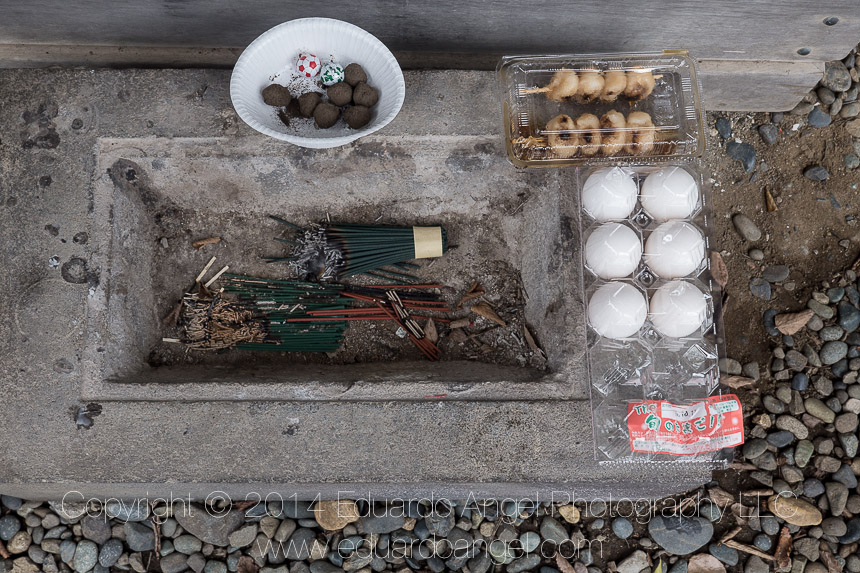
Letting instinct be my guide through Southeast Asia.
Letting instinct be my guide.
I approached my first trip to Southeast Asia in a different manner than my previous international trips. Even though I purchased the airplane tickets back in December, about 10 months before departure, I only booked hotels for the first two nights in each city. I left the remaining nights to chance. Unlike previous trips, I purposely didn’t research, map out, or schedule anything. Every morning I would get lost for a few hours by letting my instinct be my guide. Unlike my hectic life in New York City, where every day and week is carefully planned and literally every minute maximized, I wanted to drastically change gears and slow down, allowing life, and light, to hold my hand and walk me through uncertainty.
As always, I was hunting for meaningful images, beautiful faces, and remarkable locations. While doing that, I was tasting new, affordable, and outstanding food.
As I walked through the cities, I was mentally writing this journal, hoping it would inform and enhance my images. I chose not to shoot more than a few minutes of video during this trip as it would take a more rigorous approach, and it certainly would require more time and gear to do it right. As my only tool I used a tiny Fuji X100S.
The final product is a truly multimedia piece; ambient sounds recorded by us with an H4n, a few video clips, my journal transformed into a voice-over narration, and many photographs, some of which became a book carefully edited and beautifully designed by the super talented Gaia Danieli.
Part 1 (From New York to Tokyo) is now available here.
We truly appreciate your support for this and similar project by purchasing My Asia • Photo eBook (iPad)
The PDF Version is herePDF version is available here, and the printed version from Blurb is here.
Video
The future ahead of schedule.
NHK 8K World
Less than nine years ago we were all living in a standard definition world. Things were a lot simpler — the broadcast world had something that is now considered a novelty, something called broadcast standards, a set of guidelines that everyone adhered to. Then came high definition, which seemed to turn everything into the wild west. Broadcasters in the U.S. still have no official standard for what constitutes broadcast quality high-definition (HDV is still accepted by quite a few U.S. broadcasters).
So, last year Sony had a tagline for their new F series 4K line of cameras: “the future ahead of schedule.” What Sony didn’t tell you was that this was only a small part of the future. They forgot to mention the 8K cameras they’ve been developing and building with NHK Japan.
Some might be wondering what’s up with 8K, after all, 4K just recently became “a thing.” The fact is that 8K has been around for longer than you think. The London Olympics were shot on NHK 8K cameras and displayed on Panasonic 8K projectors in London.
We got to view the NHK 8K world display at NAB this year. It’s making this list not particularly because we loved it, but because it’s important and whether we like it or not, it is the future.
When Sony is behind something it’s only a matter of time before you’re left with no choice but to deal with it as a reality.
Exhibit A: Red digital cinema was screaming 4K since 2007 and everyone scoffed at it. Sony decided to make 4K a priority last year. In my opinion this was because they needed a new revenue stream after the push for 3-D failed miserably—and guess what, we’re all talking about 4K a year later, and this time it’s a serious conversation. When Sony and Panasonic are behind something together I know enough not to put up a fight.
Exhibit B: AVCHD, the now ubiquitous HD acquisition codec developed jointly by Sony and Panasonic.
We watched an 8K projected demo from NHK at NAB. The first film we saw was meant to demonstrate the mobility of the NHK 8K cube camera, the second was an 8K fashion show, which was followed by a presentation of the Sochi Olympics in 8K and a FIFA confederations cup match.
My gut reaction to most of the stuff was that the resolution was clearly there and for the first time I found myself thinking there is such a thing as too much resolution. It was all rather distracting. I could see everything, and at one point I could make out the brand of cellphone a spectator was holding in the stands at the FIFA confederations cup match. The only application where I thought the 8K resolution was appropriate was for some sporting events. Overall that much resolution looks and feels like staring out the window. There’s absolutely nothing artistic about it.
The part of the 8K display that really made me question the future was a lack of dynamic range. The highlights were clipped, there was no detail in the blacks, and the color reproduction left a lot to be desired. I’ll withhold judgment on 8K and give it the “new technology” pass for now with the hopes that the dynamic range and color issues get sorted out by the Japanese engineers before all being sold 8K TVs at CES 2020.
But if you have the opportunity to view an 8K sports display, I’d highly recommend it. The question I left the NHK 8K demo with was: how is it ever going to be broadcast in the U.S. while we’re still currently barely able to broadcast 1080P? What are your thoughts?

—-
For more in-depth technical articles visit Sean’s company Across 100th Media and follow him on Twitter (@across110media)
Photography

My Asia • eBook (PDF version)
There are tourists and there are travelers. The tourists are afraid of the unknown, the different. You see them eating at Subway or McDonald’s right next to the local food market. Travelers adapt to local customs, eat what the locals eat, enjoy trying new things, push their boundaries, embrace feeling uncomfortable, and have a blast getting lost.
“This magical book is a true traveler’s photo journal in South East Asia.” The Armchair Traveler.
Click here to purchase My Asia • Photo eBook (PDF) now.
The iPad version is available here, and the printed version from Blurb is here.
News
The Digital Technology Resource #414 – April Issue
The last couple months have been full of wonderful opportunities and inspiring successes. On our most recent monthly newsletter we talked about Tablets, Filmmaking and Asia, among other cool things we’ve been working on. If you haven’t subscribed to yet, please do so here.
Photography
Portraits: Natural and Flash.
The photographer’s best tool is light. It is used to mold, define, describe and set the mood of a portrait, so knowing how to recognize the light or control it, is of ultimate importance to the artist. I’m both a natural light, or Portraits Unplugged, kind of photographer, and also have a lot of experience with using studio strobes or portable flash, which gives me huge control. Knowing how and when to use artificial vs natural can be a challenge. I just recently photographed Ceasar deSilva in Dubai, a young, smart executive originally from Chicago, for his modeling portfolio. I scouted several locations in the afternoon with the help of my good friend, Issa Al Kindy, and we found a construction site across the river from downtown Dubai. In other images we utilized the Burj Khalifa in the background, but for this set of images I was intrigued by the construction fence that was falling down at one end. By the time Ceasar arrived, the late afternoon light had already faded in the haze. Nothing wrong with it, the light is still beautiful, and I posed him and shot with the Fuji XT 1 with the 56mm f 1.2 lens wide open for the smallest depth of field. Only his eye is sharp and the bokeh of the fence just rocks.
The whole scene and Ceasar in his power suit seems to me to require more drama. If the late orange sun was still illuminating his face, I might have stopped there. But I wanted to make it more edgy and define the mood more with directional light and darker shadows. I pulled out my Nikon SB 900 and put it in a 20” Lastolite soft box. Issa did the great honor of being my “voice activated light stand”, and with my direction, fine tuned the direction of the light.
This now required balancing the background ambient light and the flash. I still wanted to keep the background mostly out of focus, but now I wanted his entire face in focus, not just his eye, so I decided to use f 4. The true background reading was about 1/20 or 1/30, but I chose 1/60 so that the background would go darker, both the sky and the fence. This helped his face to really pop out from the fence. I did a test at 1/125 as well, but then the background was too dark. The shadows on his face are dark, no fill, which adds to the drama. This is a more powerful portrait, as if he is the man in charge, ready to take over kick some butt!
The point? Fine tune your light to match the story of your subject, and don’t settle until you find it!
If you want to learn more about lighting, I’m teaching a workshop next week at the Los Angeles Center of Photography, formerly the Julia Dean Workshop, May 5-9. It’s five days of lighting: two days of studio strobes, one day of portable flash, one day natural light and the last day combining them all. A great experience with studio, models, equipment and plenty of shooting time and feedback.
All my upcoming workshops are listed under “Education” on my website.
